Search Result
Results for "
AMPA
" in MedChemExpress (MCE) Product Catalog:
16
Isotope-Labeled Compounds
| Cat. No. |
Product Name |
Target |
Research Areas |
Chemical Structure |
-
- HY-136275
-
|
|
iGluR
|
Others
|
|
AMPA receptor modulator-2 (Example 134) is a AMPA receptor modulator, with a pIC50 of 10.1 for TARPγ2 dependent AMPA receptor . pIC50 = -lgIC50.
|
-

-
- HY-161090
-
|
|
iGluR
|
Neurological Disease
|
|
AMPA receptor modulator-7 (compound 36) is a modulator of AMPA receptor. AMPA receptor modulator-7 has oral activity and can penetrate the blood-brain barrier .
|
-
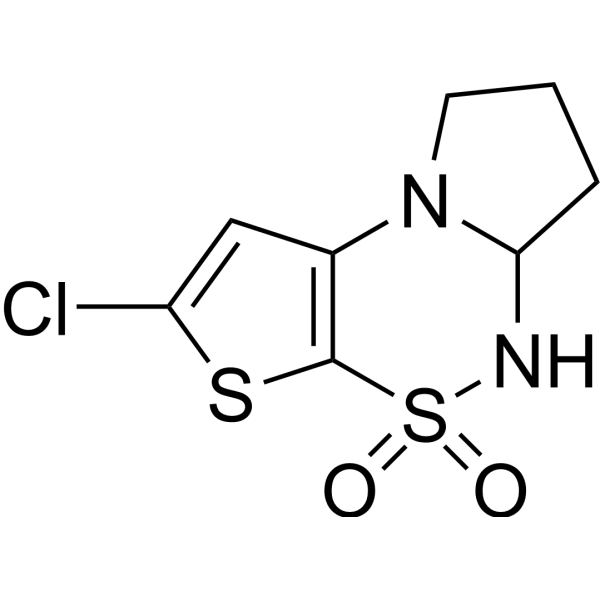
-
- HY-145959
-
|
|
iGluR
|
Neurological Disease
|
|
AMPA receptor antagonist-3 is an AMPA receptor antagonist extracted from patent US20070027143A1. AMPA receptor antagonist-3 can be used for the research of central nervous system disorders .
|
-
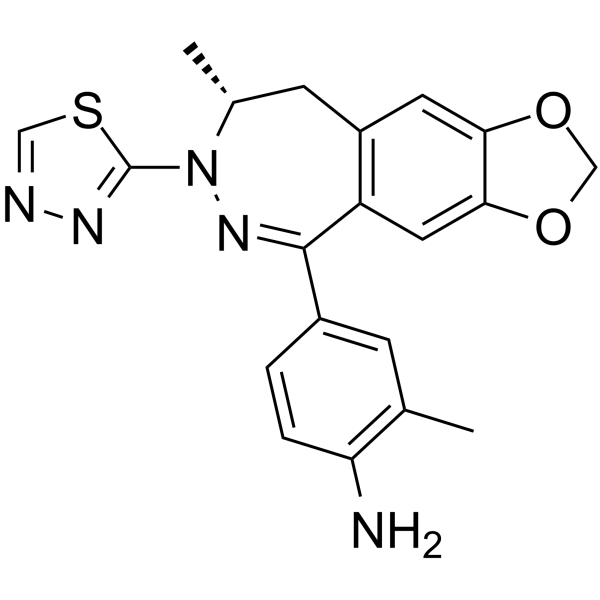
-
- HY-145761
-
|
|
iGluR
|
Neurological Disease
|
|
AMPA-IN-1 is a potent inhibitor of AMPA receptor. AMPA receptors are receptors that are widely expressed in the brain, and play a central role in the regulation of fast excitatory synaptic transmission and synaptic plasticity. AMPA-IN-1 has the potential for the research of various central diseases including epilepsy (extracted from patent WO2017082288A1, compound 14) .
|
-
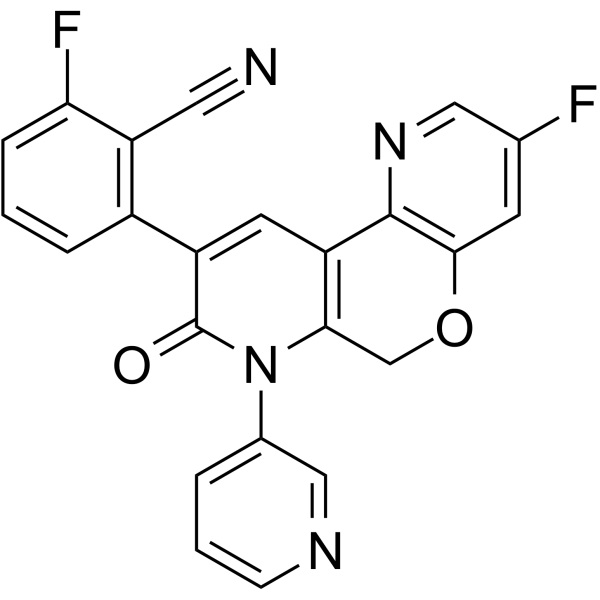
-
- HY-149975
-
|
|
iGluR
|
Neurological Disease
|
|
AMPA receptor modulator-4, a 3,4-dihydro-2H-1,2,4-benzothiadiazine 1,1-dioxide (BTD), is an orally active positive allosteric modulator of the AMPA receptors (AMPAR PAMs). AMPA receptor modulator-4 can cross the blood-brain barrier. AMPA receptor modulator-4 increases the cognition performance and improves working memory performance in mice .
|
-
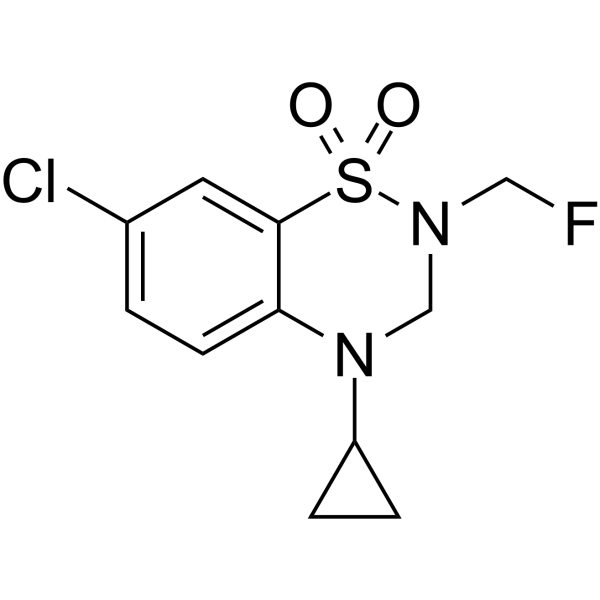
-
- HY-154798
-
|
|
iGluR
|
Neurological Disease
|
|
AMPA receptor modulator-5 (Example 217) is an AMPA receptor modulator. AMPA receptor modulator-5 can be used for research of neurological disease .
|
-
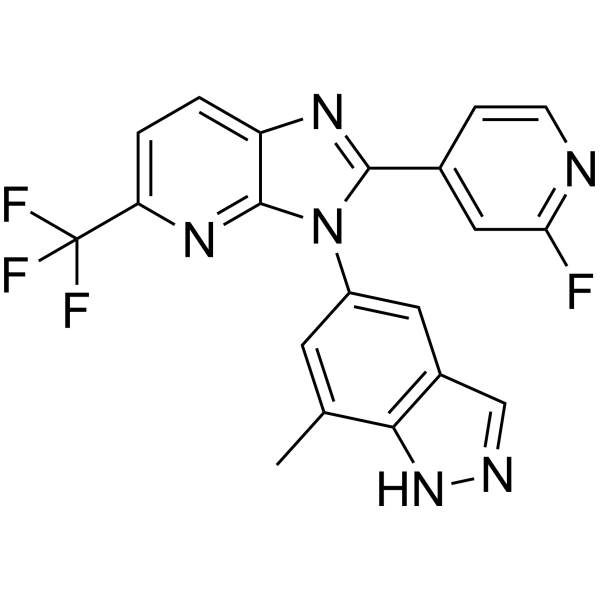
-
- HY-155628
-
|
|
iGluR
|
Others
|
|
AMPA receptor modulator-6 is an AMPA receptor positive allosteric modulator (PAM). AMPA receptor modulator-6 can be used in the study of neurological diseases .
|
-
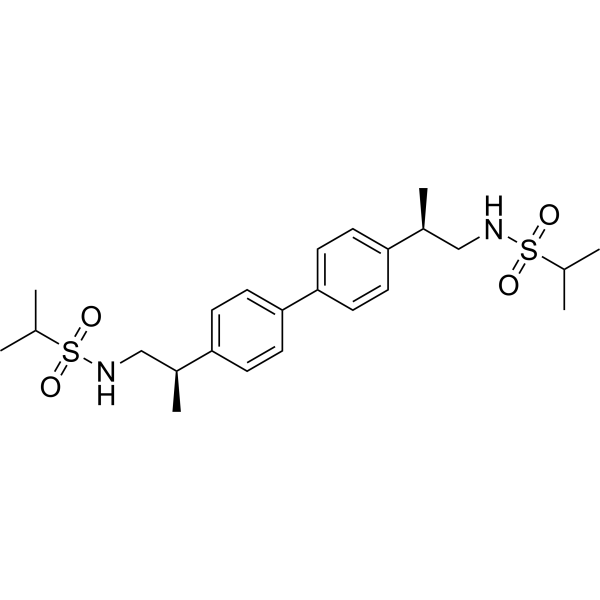
-
- HY-136905
-
|
|
iGluR
|
Others
|
|
AMPA receptor antagonist-2 (example 23) is an AMPA receptor antagonist .
|
-
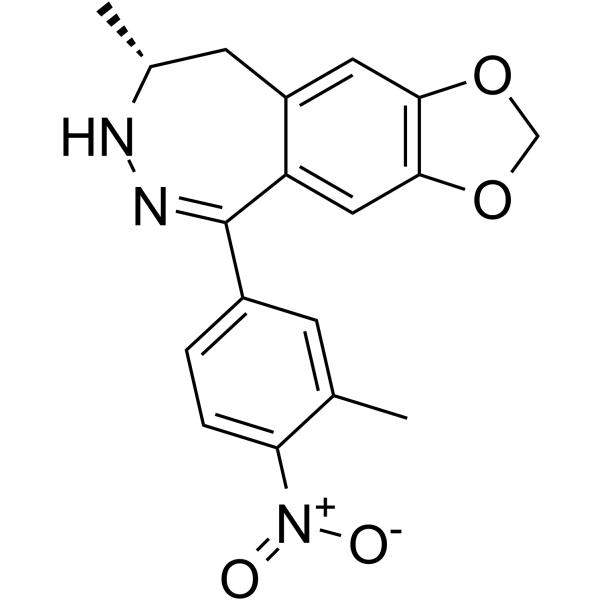
-
- HY-122150
-
|
|
iGluR
|
Neurological Disease
|
|
AMPA receptor modulator-3 is an allosteric AMPA receptor modulator (EC50: 4.4 μM). AMPA receptor modulator-3 can be used in the research of mammalian nervous system, such as learning and memory .
|
-

-
- HY-112699
-
|
|
iGluR
|
Neurological Disease
|
|
AMPA receptor modulator-1 is a potent, orally active and selective AMPAR regulatory protein TARP γ-8 negative modulator with a pIC50 of 9.7, more selective over GluA1/γ-2 (pIC50=5) .
|
-
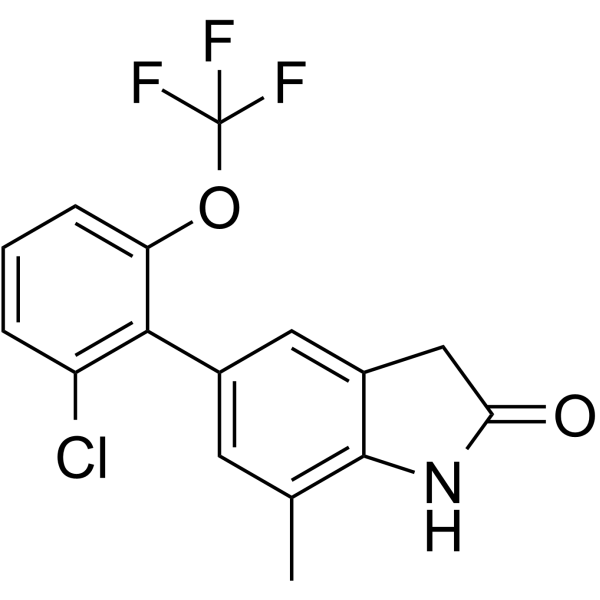
-
- HY-103235
-
|
|
iGluR
|
Neurological Disease
|
|
NPEC- caged-(S)-AMPA, a caged neurotransmitter analog, is a NPEC photoprotecting group caged the (S)-AMPA (HY-100815A) to make caged ligands specific for glutamate receptor sub-types. NPEC- caged-(S)-AMPA selectively activates AMPA receptor .
|
-

-
- HY-100815A
-
|
L-AMPA
|
|
|
|
(S)-AMPA (L-AMPA), an active S-enantiomer of AMPA, is a potent and selective AMPA receptor agonist .
|
-
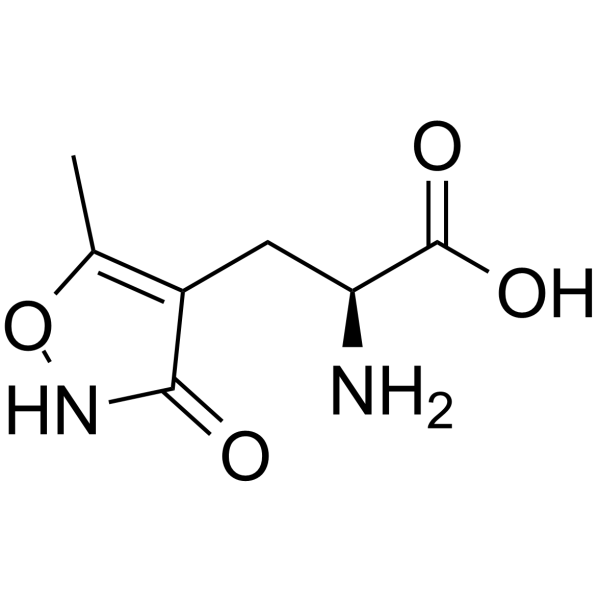
-
- HY-100815B
-
|
(±)-AMPA
|
|
|
|
(RS)-AMPA ((±)-AMPA) is a glutamate analogue and a potent and selective excitatory neurotransmitter L-glutamic acid agonist. (RS)-AMPA does not interfere with binding sites for kainic acid or NMDA receptors .
|
-
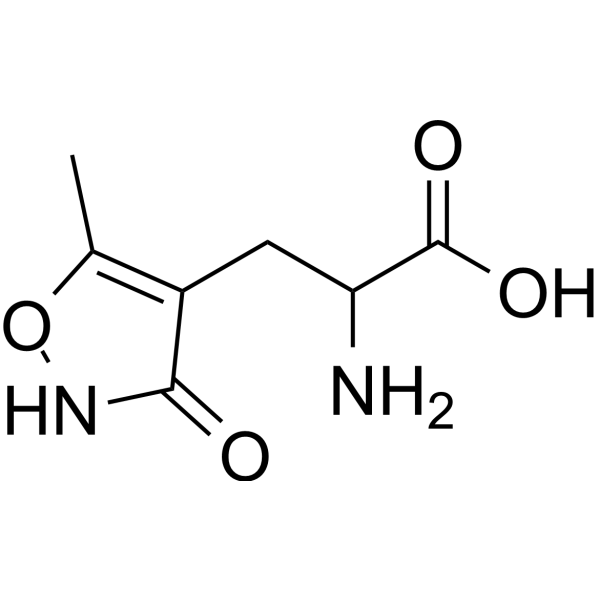
-
- HY-100815D
-
|
(±)-AMPA monohydrate
|
iGluR
|
Neurological Disease
|
|
(RS)-AMPA ((±)-AMPA) monohydrate is a glutamate analogue and a potent and selective excitatory neurotransmitter L-glutamic acid agonist. (RS)-AMPA monohydrate does not interfere with binding sites for kainic acid or NMDA receptors .
|
-
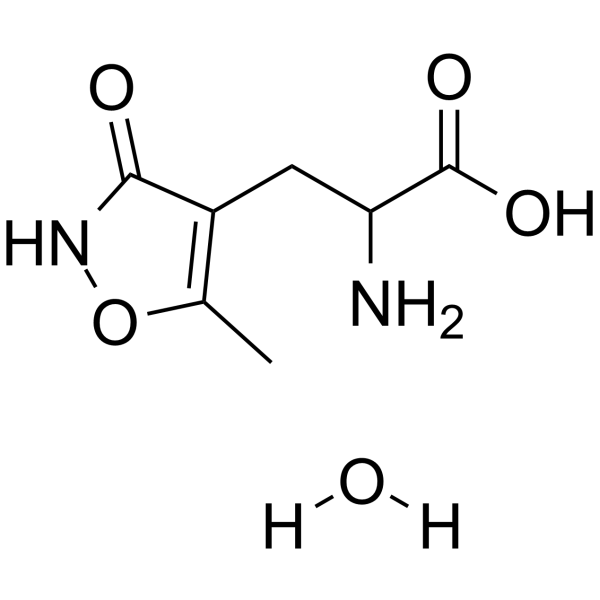
-
- HY-100815C
-
|
(±)-AMPA hydrobromide
|
|
|
|
(RS)-AMPA ((±)-AMPA) hydrobromide is a glutamate analogue and a potent and selective excitatory neurotransmitter L-glutamic acid agonist. (RS)-AMPA hydrobromide does not interfere with binding sites for kainic acid or NMDA receptors .
|
-
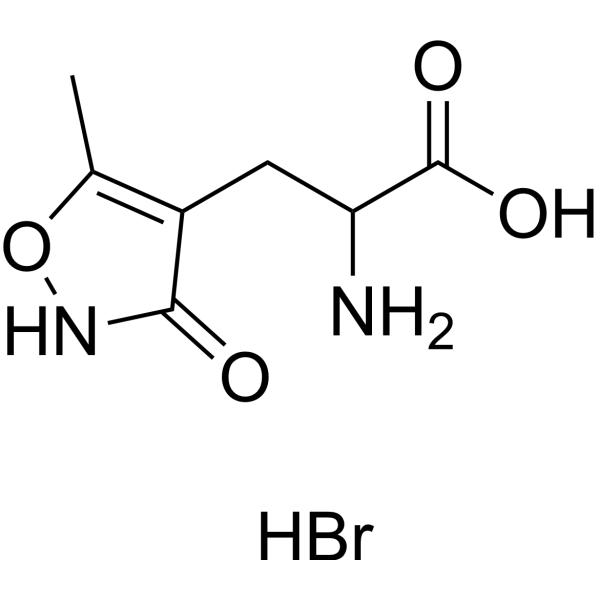
-
- HY-163097
-
|
|
iGluR
|
Neurological Disease
|
|
ZCAN262 (compound 6 ) is an AMPA modulator. ZCAN262 prevents AMPA-mediated excitotoxicity by targeting an allosteric binding site .
|
-
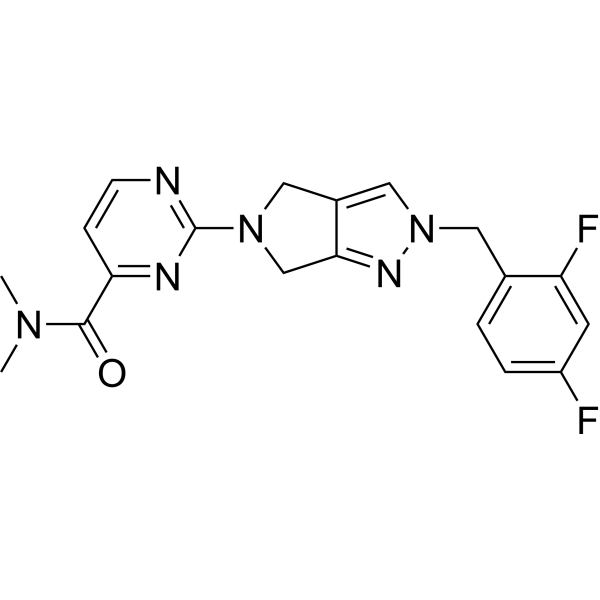
-
- HY-129030
-
|
|
iGluR
|
Neurological Disease
|
|
BDZ-g is a potent, selective antagonist of AMPA receptor. BDZ-g has the potential for the research of various neurological disorders involving excessive activity of AMPA receptors .
|
-

-
- HY-10935
-
|
|
iGluR
|
Neurological Disease
|
|
LY450108 is a potent AMPA receptor potentiator. LY450108 has the potential for depression and Parkinson's disease research .
|
-
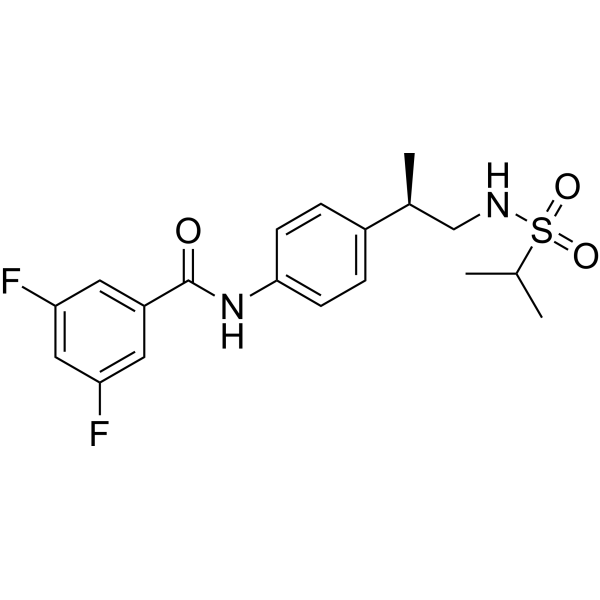
-
- HY-W015309
-
|
|
iGluR
|
Neurological Disease
|
|
Decanoic acid, a component of medium chain triclycerides, is a brain-penetrant and non-competitive inhibitor of AMPA receptor. Decanoic acid has antiseizure effects .
|
-
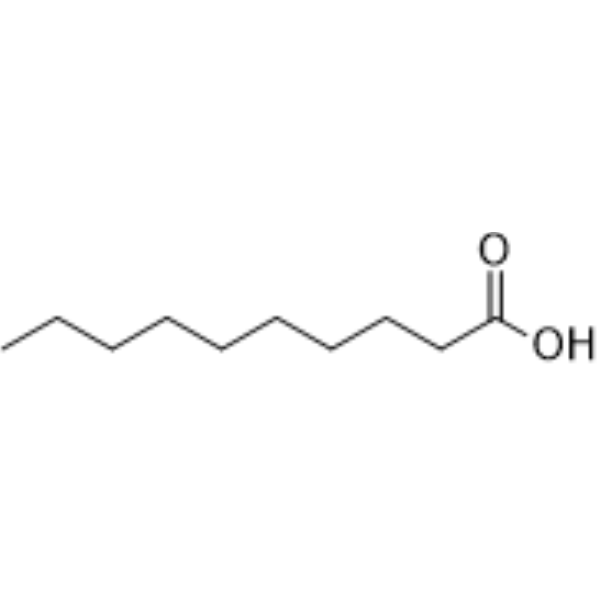
-
- HY-122742
-
|
|
iGluR
|
Neurological Disease
|
|
HBT1 is a potent α-Amino-3-hydroxy-5-methyl-4-isoxazole-propionic acid (AMPA) receptor (AMPA-R) potentiator. HBT1 bonds with S518 in the ligand-binding domain (LBD) of AMPA-R in a glutamate-dependent manner. HBT1 did not show remarkable bell-shaped response in brain-derived neurotrophic factor (BDNF) production in primary neurons .
|
-

-
- HY-15071
-
|
|
iGluR
|
Neurological Disease
|
|
YM90K is a potent and selective AMPA receptor antagonist with a Ki of 84 nM. YM90K is less potent in inhibiting kainate (Ki of 2.2 μM) and NMDA (Ki of 37 μM) receptors. YM90K has neuroprotective actions .
|
-

-
- HY-105860
-
|
BGG 492
|
iGluR
|
Neurological Disease
|
|
Selurampanel (BGG 492) is an orally active and competitive AMPA receptor antagonist with an IC50 of 190 nM. Selurampanel has reasonable blood-brain barrier penetration. Selurampanel can be used for epilepsy research .
|
-
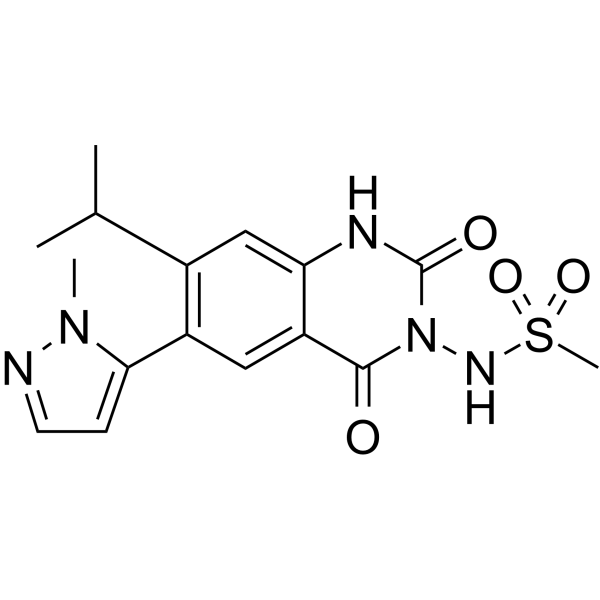
-
- HY-10933
-
CX516
1 Publications Verification
BDP 12
|
iGluR
|
Neurological Disease
|
|
CX516 (BDP 12) is an ampakine and acts as an AMPA receptor positive allosteric modulator for the research of Alzheimer's disease, schizophrenia and mild cognitive impairment (MCI) .
|
-
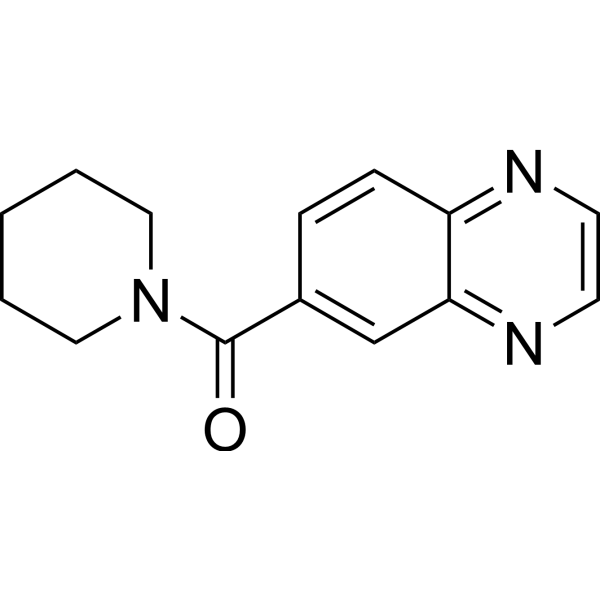
-
- HY-15066
-
CNQX
Maximum Cited Publications
9 Publications Verification
FG9065
|
iGluR
|
Neurological Disease
|
|
CNQX (FG9065) is a potent and competitive AMPA/kainate receptor antagonist with IC50s of 0.3 μM and 1.5 μM, respectively. CNQX is a competitive non-NMDA receptor antagonist . CNQX blocks the expression of fear-potentiated startle in rats .
|
-
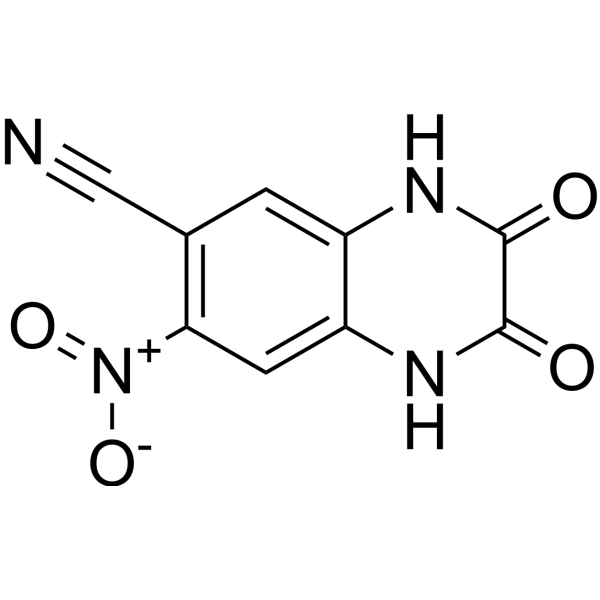
-
- HY-107606
-
|
|
iGluR
|
Neurological Disease
|
|
UBP301 is a potent and selective antagonist of kainate receptor with IC50 and KD of 164 μM and 5.94 μM, respectively. UBP301 has ∼30-fold selectivity of kainate receptor over AMPA receptor. UBP301 is the derivative of willardiine .
|
-
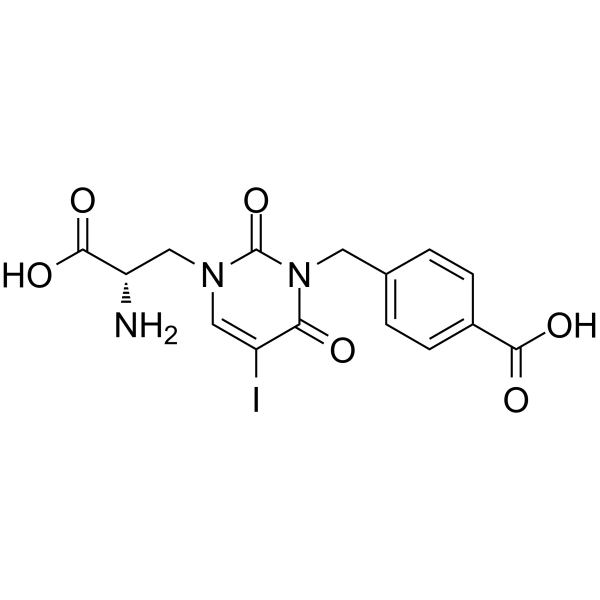
-
- HY-107606A
-
|
|
iGluR
|
Neurological Disease
|
|
UBP301 hydrochloride is a potent and selective antagonist of kainate receptor with IC50 and KD of 164 μM and 5.94 μM, respectively. UBP301 hydrochloride has ~30-fold selectivity of kainate receptor over AMPA receptor. UBP301 hydrochloride is the derivative of willardiine .
|
-

-
- HY-108497
-
|
|
Somatostatin Receptor
|
Neurological Disease
Cancer
|
|
L-803087 is a potent and selective somatostatin sst4 receptor agonist with a Ki of 0.7 nM. L-803087 is >280-fold higher than other somatostatin receptors. L-803087 facilitates AMPA-mediated hippocampal synaptic responses in vitro and increases kainate-induced seizures in mice .
|
-

-
- HY-15078
-
|
(R)-SPD502
|
iGluR
|
Neurological Disease
|
|
NS1219 ((R)-SPD502) is the isomer of NS 1209 HY-15074. NS1209 is a selective AMPA receptor antagonist with neuroprotective activity. NS1209 can be used for the research of stroke, neuropathic pain and epilepsy .
|
-
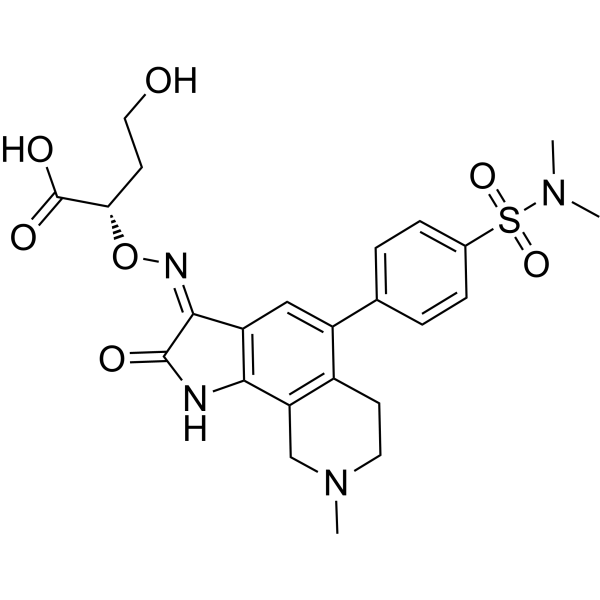
-
- HY-106467B
-
|
Tinnex hydrochloride
|
iGluR
|
Neurological Disease
|
|
Caroverine (Tinnex) hydrochloride is a potent, competitive and reversible antagonist of NMDA and AMPA glutamate receptor. Caroverine hydrochloride is also an antioxidant and calcium-blocking agent that exhibits vasorelaxant action. Caroverine hydrochloride can be used for the research of inner ear tinnitus .
|
-
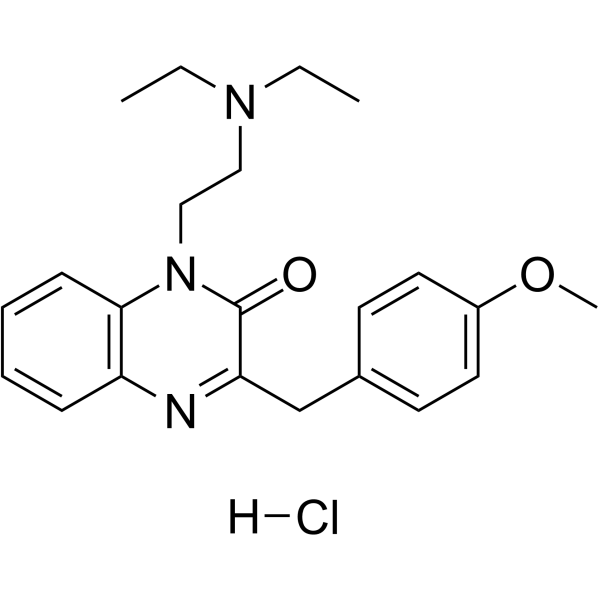
-
- HY-118424
-
|
|
iGluR
|
Neurological Disease
|
|
JNJ-55511118 is a highly potent, reversible, and selective AMPA receptor inhibitor selective for TARP-γ8. JNJ-55511118 fully displaces the radioligand (20 nM) with the Ki of 26 nM in competition binding experiments. JNJ-55511118 is a tool molecule with potential therapeutic utility as an anticonvulsant or neuroprotectant .
|
-
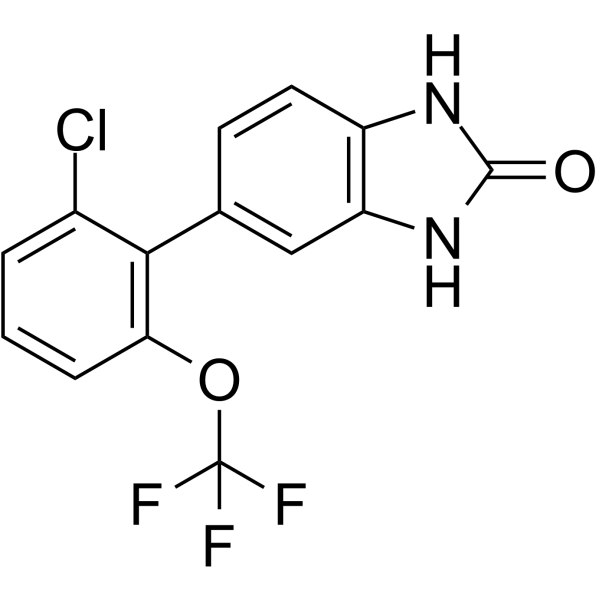
-
- HY-108497A
-
|
|
Somatostatin Receptor
|
Neurological Disease
Cancer
|
|
L-803087 TFA is a potent and selective somatostatin sst4 receptor agonist with a Ki of 0.7 nM. L-803087 TFA is >280-fold more selective for sst4 receptor than other somatostatin receptors. L-803087 TFA facilitates AMPA-mediated hippocampal synaptic responses in vitro and increases kainate-induced seizures in mice .
|
-
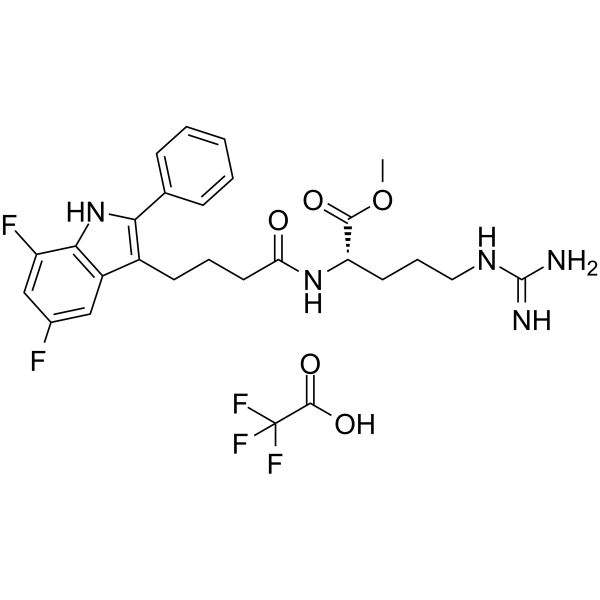
-
- HY-110175
-
|
|
iGluR
|
Neurological Disease
|
|
CX614 is a positive variant modulator of AMPA receptors that enhances excitatory postsynaptic potentials (amplitude and duration) by blocking and slowing the inactivation of responses to glutamate and automatically evokes excitatory postsynaptic currents in neuronal cultures. CX614 can be used in the study of psychiatric disorders such as depression .
|
-
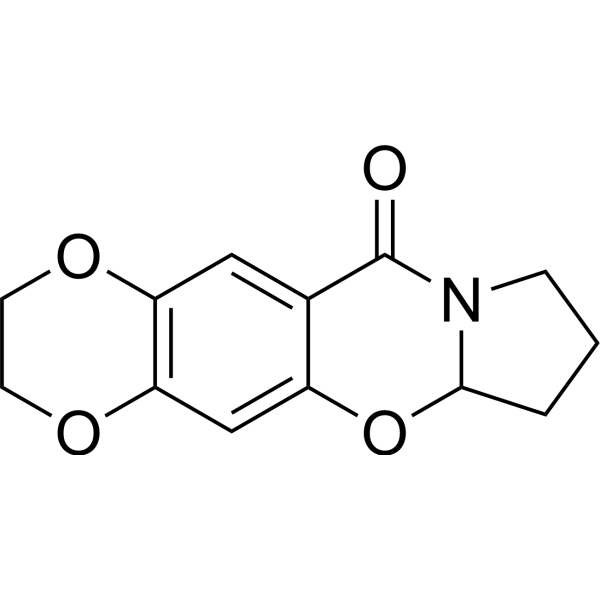
-
- HY-19432
-
|
|
iGluR
|
Neurological Disease
|
|
UBP-282 is a potent, selective and competitive AMPA and kainate receptor antagonist. UBP-282 inhibits the fast component of the dorsal root-evoked ventral root potential (fDR-VRP) with an IC50 value of 10.3 μM. UBP-282 antagonizes kainate-induced depolarisations of dorsal roots with a pA2 value of 4.96 .
|
-

-
- HY-101528
-
|
|
iGluR
|
Neurological Disease
|
|
IDRA 21 is a positive and orally active modulator of the AMPA receptor. IDRA 21 facilitates excitatory neurotransmission via GluR1/2 receptors. IDRA 21 has the potential for the research of cognitive/memory disorders, including those associated with aging .
|
-
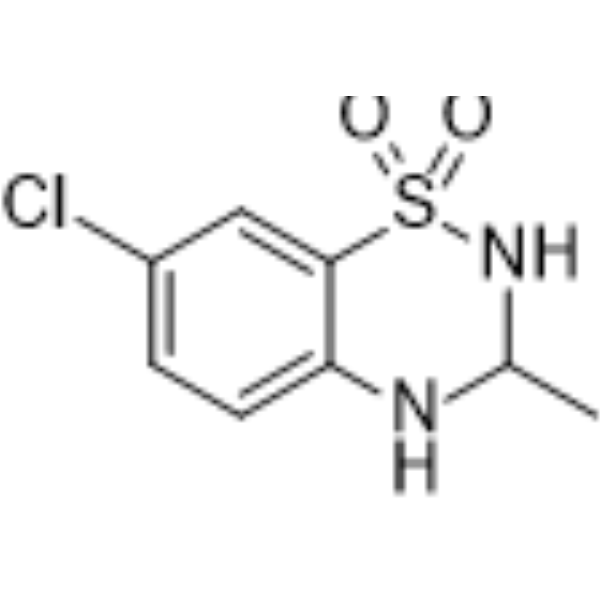
-
- HY-110234
-
|
McN 4853 D12 ; RWJ 17021 D12
|
iGluR
GABA Receptor
Sodium Channel
Calcium Channel
Potassium Channel
Carbonic Anhydrase
|
Neurological Disease
|
|
Topiramate D12 (McN 4853 D12) is a deuterium labeled Topiramate. Topiramate is a broad-spectrum antiepileptic agent. Topiramate is a GluR5 receptor antagonist. Topiramate produces its antiepileptic effects through enhancement of GABAergic activity, inhibition of kainate/AMPA receptors, inhibition of voltage-sensitive sodium and calcium channels, increases in potassium conductance, and inhibition of carbonic anhydrase .
|
-
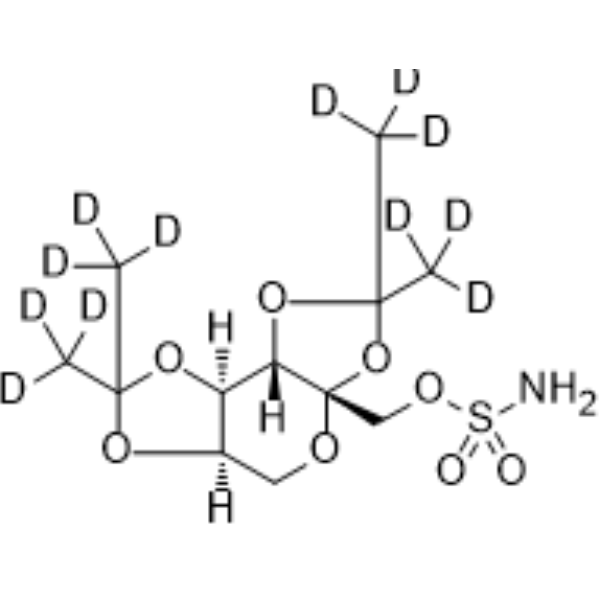
-
- HY-103234A
-
|
|
iGluR
|
Neurological Disease
|
|
GYKI 52466 dihydrochloride is an orally active, highly selective and noncompetitive AMPA/kainate receptor antagonist with the IC50 values of 7.5 and 11μM, respectively. GYKI 52466 dihydrochloride has good blood brain barrier permeability and anticonvulsant effect. GYKI 52466 dihydrochloride can be used in Parkinson's disease research .
|
-
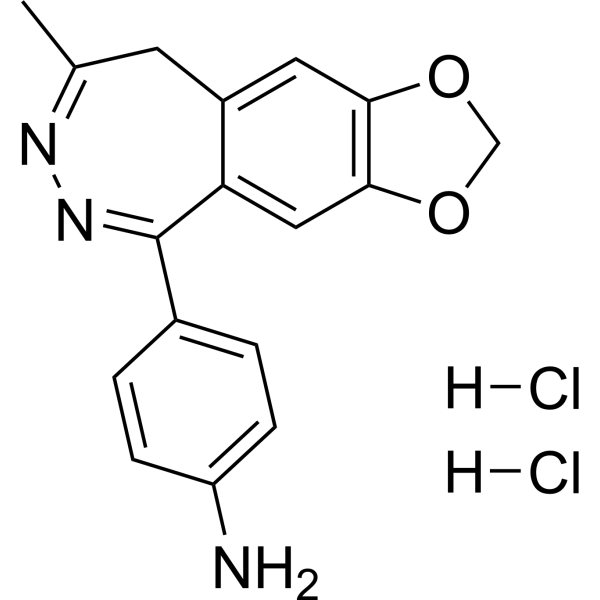
-
- HY-103234
-
|
|
iGluR
|
Neurological Disease
|
|
GYKI 52466 is an orally active, highly selective and noncompetitive AMPA/kainate receptor antagonist with the IC50 values of 7.5 and 11μM, respectively. GYKI 52466 has good blood brain barrier permeability and anticonvulsant effect. GYKI 52466 can be used in Parkinson's disease research .
|
-

-
- HY-103234B
-
|
|
iGluR
|
Neurological Disease
|
|
GYKI 52466 hydrochloride is an orally active, highly selective and noncompetitive AMPA/kainate receptor antagonist with the IC50 values of 7.5 and 11μM, respectively. GYKI 52466 hydrochloride has good blood brain barrier permeability and anticonvulsant effect. GYKI 52466 hydrochloride can be used in Parkinson's disease research .
|
-
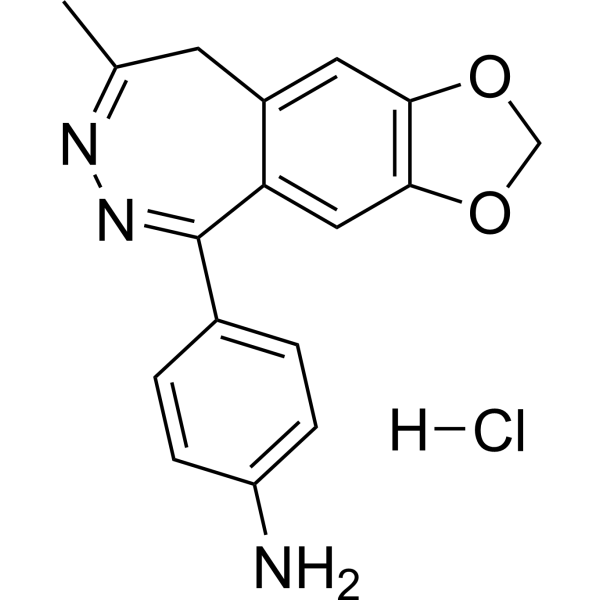
-
- HY-139897
-
|
|
iGluR
|
Neurological Disease
|
|
CX 717 is a positive allosteric modulator of AMPA receptor. Antidepressant-like effect. CX 717 can be used for the research of adult attention deficit hyperactivity disorder (ADHD) .
|
-
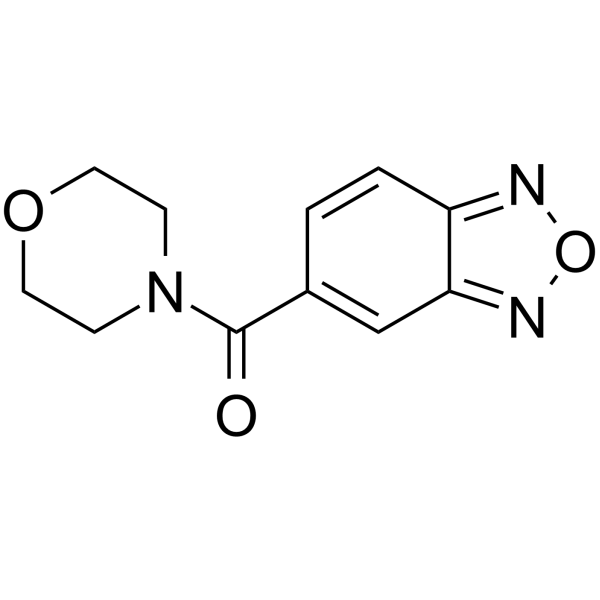
-
- HY-101165
-
|
|
|
|
|
Cyclothiazide, a positive allosteric modulator of AMPA receptors, is used frequently to block the desensitization of both native and heterologously expressed AMPA receptors. Cyclothiazide is known to produce a fast inhibition of AMPA receptor desensitization and a much slower potentiation of the AMPA current .
|
-
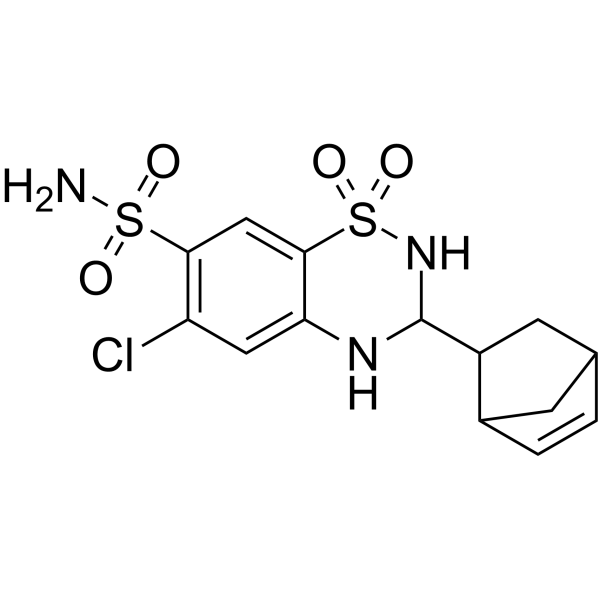
-
- HY-P3355
-
|
|
iGluR
|
Neurological Disease
|
|
p-fin4 is a peptide inhibitor of STEP Phosphatase-GluA2 AMPA receptor interaction with a Ki of 0.4 μM. p-fin4 restores the memory deficits and displays anxiolytic and antidepressant effects in a scopolamine-treated rat model. p-fin4 is a promising lead compound for novel cognitive enhancers and/or behavioral modulators .
|
-

-
- HY-P3340
-
|
|
iGluR
|
Neurological Disease
|
|
Leptin (116-130) is a bioactive leptin fragment. Leptin (116-130) promotes AMPA receptor trafficking to synapses and facilitate activity-dependent hippocampal synaptic plasticity. Leptin (116-130) prevents hippocampal synaptic disruption and neuronal cell death in models of amyloid toxicity. Leptin (116-130) has the potential for the research of Alzheimer's disease (AD) .
|
-

-
- HY-13456
-
|
|
iGluR
|
Neurological Disease
|
|
LY-404187 is a potent, selective and centrally active positive allosteric modulator of AMPA receptors, with the EC50s of 5.65, 0.15, 1.44, 1.66 and 0.21 µM for GluR1i, GluR2i, GluR2o, GluR3i and GluR4i, respectively. LY-404187 has therapeutic potential in a number of psychiatric disorders and neurodegenerative diseases .
|
-
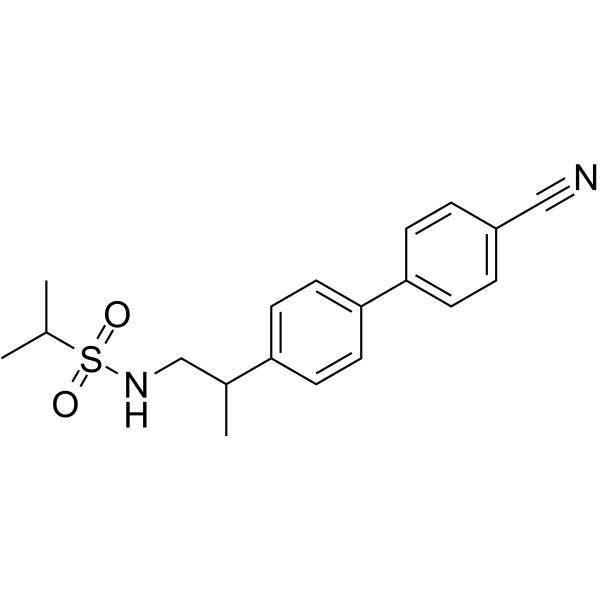
-
- HY-108599
-
DCP-LA
2 Publications Verification
FR236924
|
PKC
CaMK
Phosphatase
Apoptosis
|
Neurological Disease
|
|
DCP-LA (FR236924), a linoleic acid derivative, selectively and directly activates PKCε. DCP-LA activates Ca( 2+)/calmodulin-dependent protein kinase II (CaMKII) and inhibits protein phosphatase-1 (PP-1) to stimulate AMPA receptor exocytosis. DCP-LA inhibits activation of caspase-3/-9 and protects neurons at least in part from oxidative stress-induced apoptosis .
|
-

-
- HY-P3354
-
|
|
iGluR
|
Neurological Disease
|
|
p3Ysh-3 is a peptide inhibitor of STEP Phosphatase-GluA2 AMPA receptor interaction with a Ki of 1.09 μM. p3Ysh-3 restores the memory deficits and displays anxiolytic and antidepressant effects in a scopolamine-treated rat model. p3Ysh-3 is a promising lead compound for novel cognitive enhancers and/or behavioral modulators .
|
-

-
- HY-108707
-
|
|
iGluR
|
Neurological Disease
|
|
LY3130481 is an AMPA receptor antagonist that is dependent upon transmembrane AMPA receptor regulatory protein (TARP) γ-8, selective inhibits AMPA/TARP γ-8 with an IC50 of 65 nM .
|
-
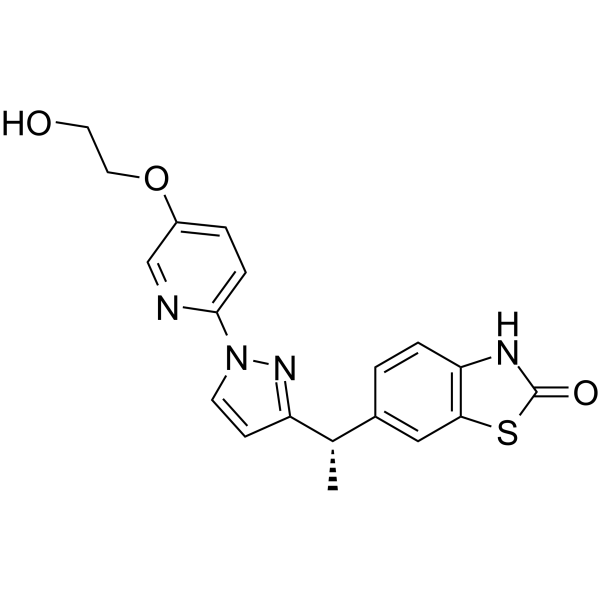
-
- HY-12506A
-
|
1-Naphthylacetyl spermine trihydrochloride
|
iGluR
|
Neurological Disease
|
|
Naspm trihydrochloride (1-Naphthylacetyl spermine trihydrochloride), a synthetic analogue of Joro spider toxin, is a calcium permeable AMPA (CP-AMPA) receptors antagonist.
|
-
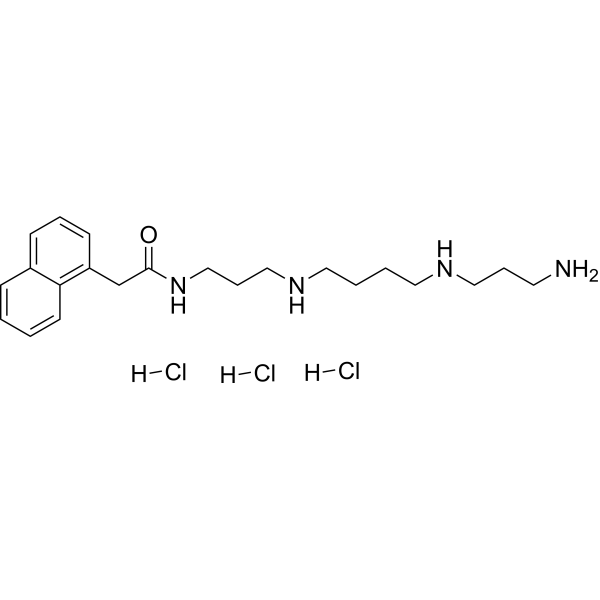
-
- HY-12506
-
|
1-Naphthylacetyl spermine
|
iGluR
|
Neurological Disease
|
|
Naspm (1-Naphthyl acetyl spermine), a synthetic analogue of Joro spider toxin, is a calcium permeable AMPA (CP-AMPA) receptors antagonist.
|
-

-
- HY-112781
-
|
PF-04958242
|
iGluR
|
Neurological Disease
|
|
Pesampator (PF-04958242) is a potent and highly selective positive allosteric modulator of AMPA receptor (an AMPA potentiator) with an EC50 of 310 nM and a Ki of 170 nM .
|
-
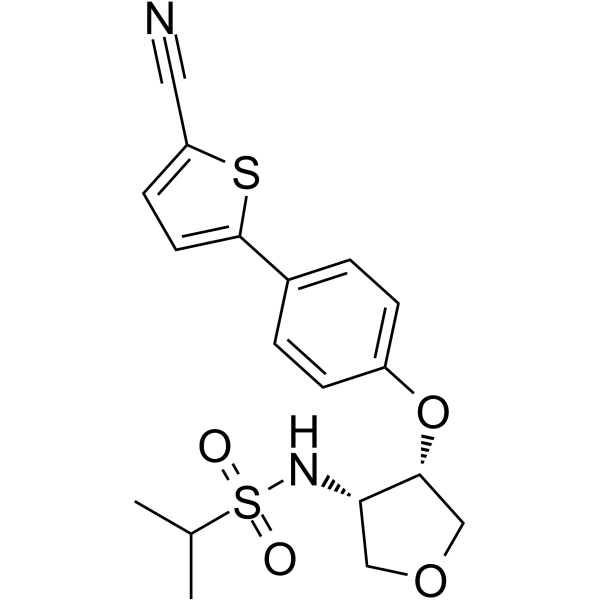
-
- HY-12509
-
|
|
iGluR
|
Neurological Disease
|
|
PEPA is an allosteric modulator of AMPA receptors; binds to the GluA2o and GluA3o LBDs and can be utilized as an indicator of AMPA receptor heterogeneity.
|
-
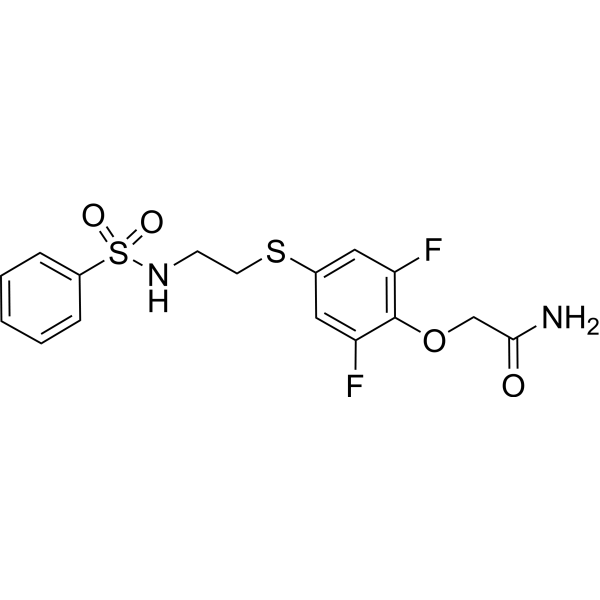
- HY-124906
-
|
|
iGluR
|
Neurological Disease
|
|
JAMI1001A is a positive allosteric modulator of AMPA receptor. JAMI1001A efficaciously modulates AMPA receptor deactivation and desensitization of both flip and flop receptor isoforms .
|
-
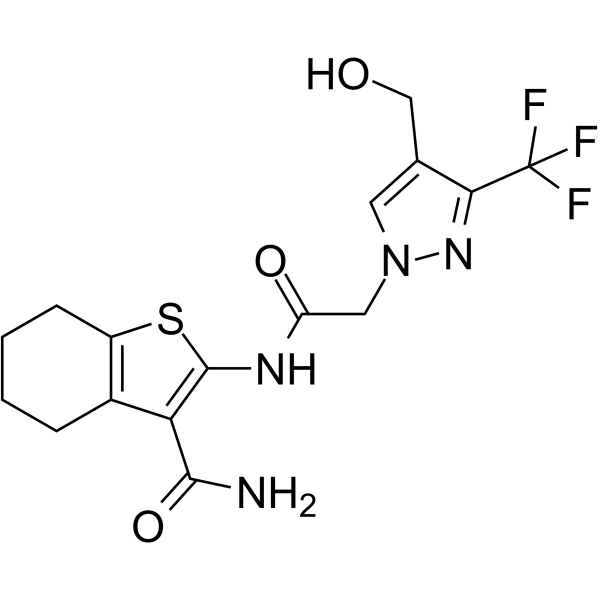
- HY-100785
-
-
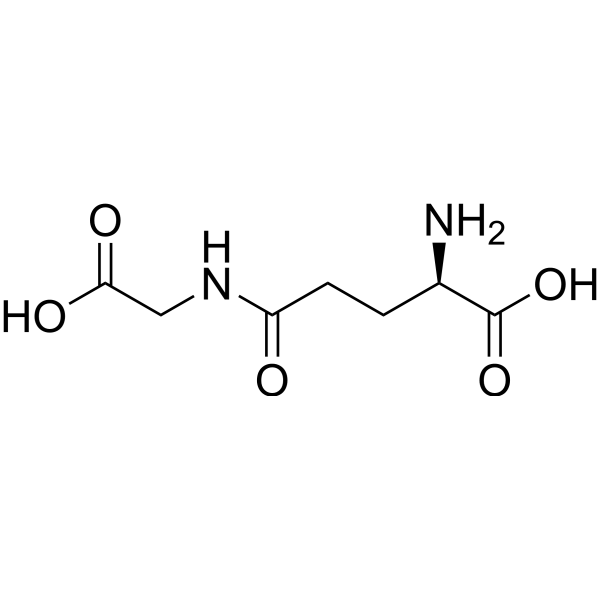
- HY-101216
-
-

- HY-15073
-
-
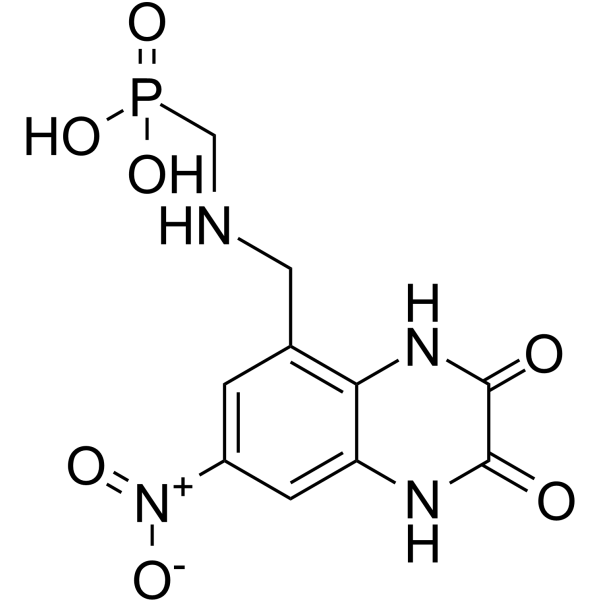
- HY-10934
-
|
LY451395
|
iGluR
|
Neurological Disease
|
|
Mibampator (LY451395) is a potent and highly selective potentiator of the AMPA receptors.
|
-
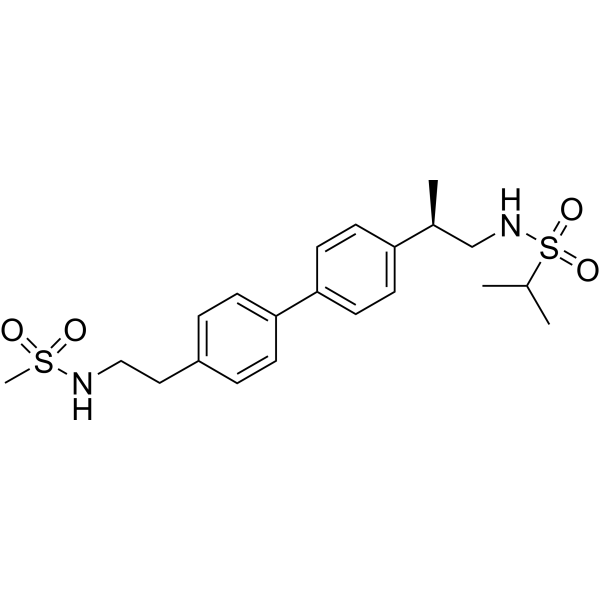
- HY-12499
-
|
(-)-Willardiine
|
iGluR
|
Neurological Disease
|
|
(S)-Willardiine is a potent agonist of AMPA/kainate receptors with EC50 of 44.8 uM.
|
-
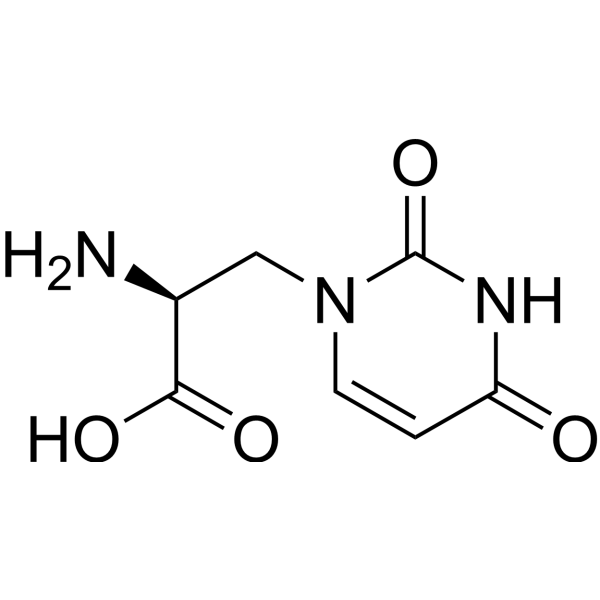
- HY-10937
-
-

- HY-14451
-
|
|
iGluR
|
Neurological Disease
|
|
PF-4778574 is a positive allosteric modulation of AMPA receptor with EC50 of 45 to 919 nM in differenct cells.
|
-
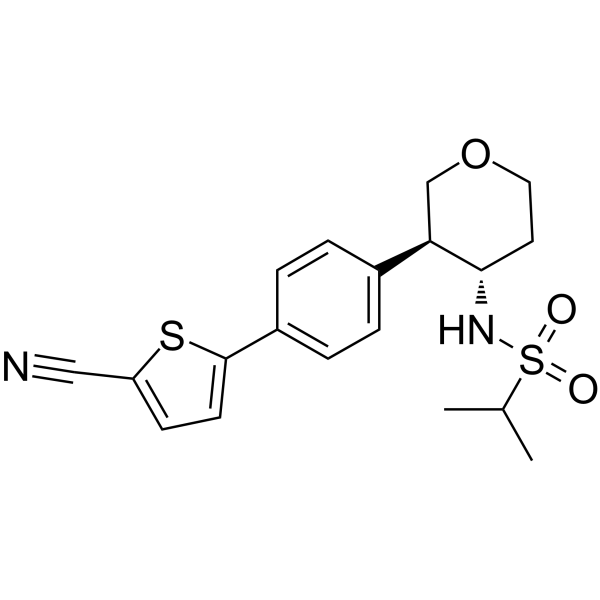
- HY-103230
-
-
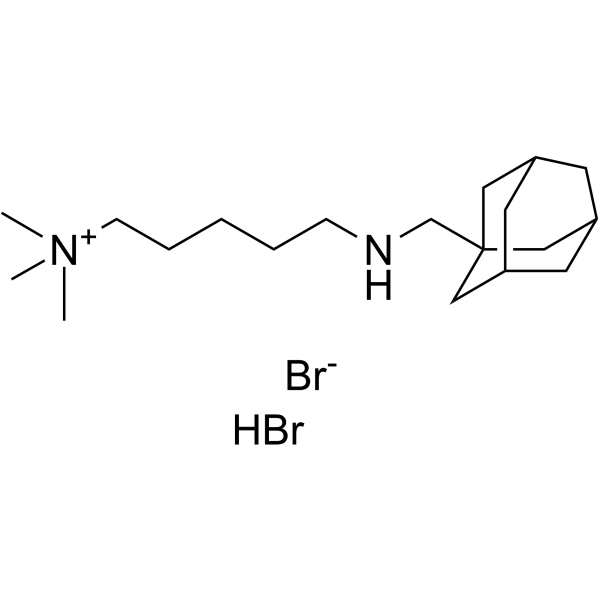
- HY-18663B
-
|
|
iGluR
|
Neurological Disease
|
|
CP-465022 hydrochloride is a potent, and selective noncompetitive AMPA receptor antagonist with anticonvulsant activity. CP-465022 is against Kainate-induced response with an IC50 of 25 nM in rat cortical neurons. CP-465022 provides a new tool to investigate the role of AMPA receptors in physiological and pathophysiological processes .
|
-
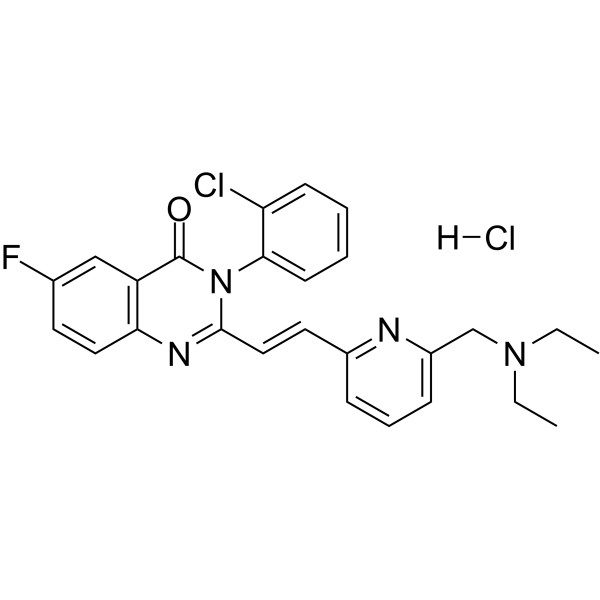
- HY-18663A
-
|
|
iGluR
|
Neurological Disease
|
|
CP-465022 Maleate is a potent, and selective noncompetitive AMPA receptor antagonist with anticonvulsant activity. CP-465022 is against Kainate-induced response with an IC50 of 25 nM in rat cortical neurons. CP-465022 provides a new tool to investigate the role of AMPA receptors in physiological and pathophysiological processes .
|
-
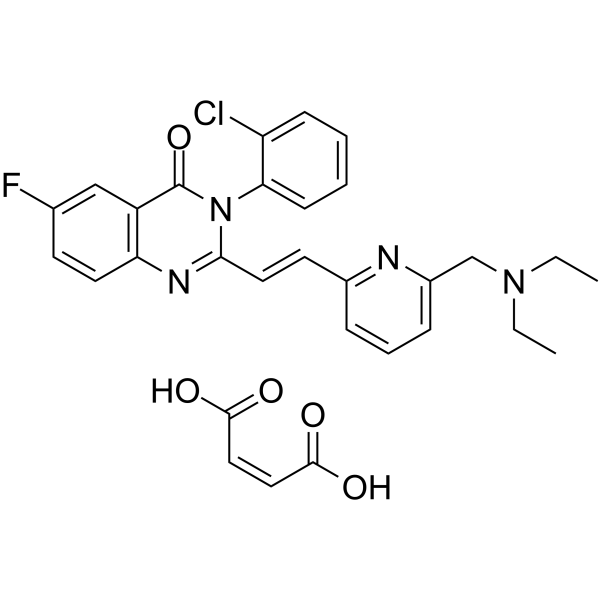
- HY-18663
-
|
|
iGluR
|
Neurological Disease
|
|
CP-465022 is a potent, and selective noncompetitive AMPA receptor antagonist with anticonvulsant activity. CP-465022 is against Kainate-induced response with an IC50 of 25 nM in rat cortical neurons. CP-465022 provides a new tool to investigate the role of AMPA receptors in physiological and pathophysiological processes .
|
-

- HY-15068
-
|
FG9202
|
iGluR
|
Neurological Disease
|
|
NBQX (FG9202) is a highly selective and competitive AMPA receptor antagonist. NBQX has neuroprotective and anticonvulsant activity .
|
-
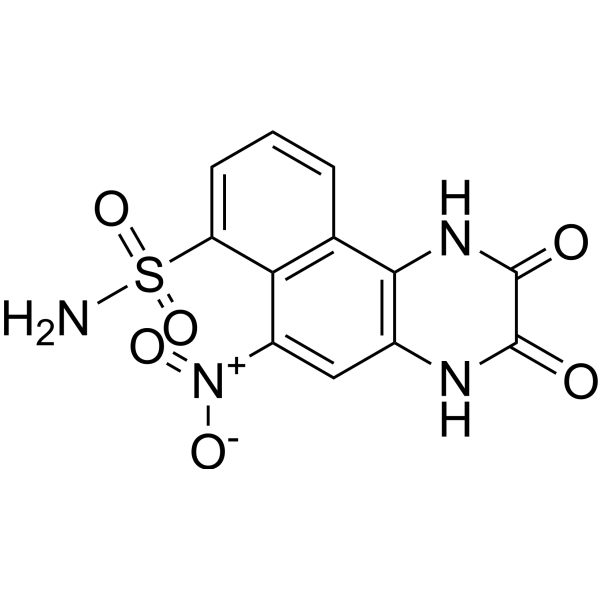
- HY-19433A
-
|
|
iGluR
|
Neurological Disease
|
|
(S)-ATPO is the (S)-enantiomer of ATPO, which is a competitive antagonist at GluR1-4 (AMPA-preferring) receptors .
|
-
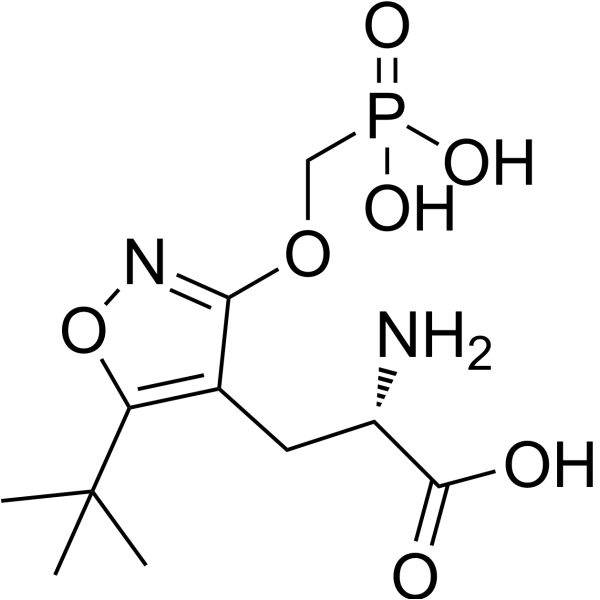
- HY-115864
-
|
TAK-653
|
iGluR
Lipoxygenase
|
Neurological Disease
|
|
Osavampator (TAK-653) is a AMPA receptor positive allosteric modulator. Osavampator selectively binds to AMPA-R in a glutamate-dependent manner and induces Ca 2+ influx in hGluA1i CHO cells (EC50 = 3.3 μM). Osavampator improves learning and memory in many models. Osavampator is can be used for the research of depressive disorders .
|
-
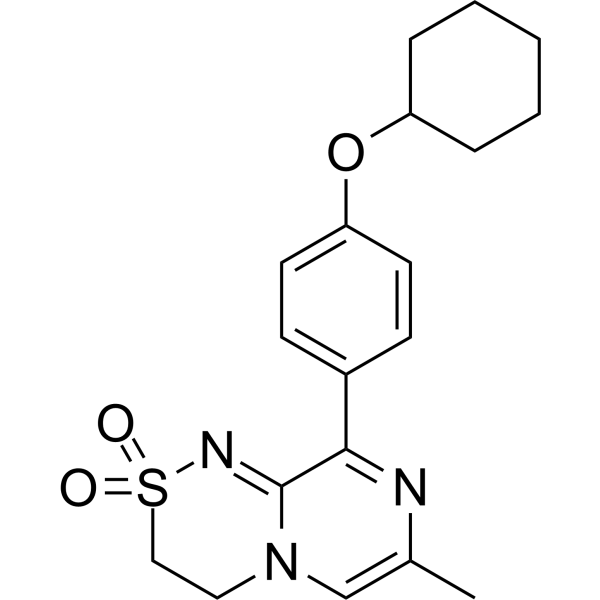
- HY-107518
-
|
(R,S)-3,4-DCPG
|
iGluR
|
Neurological Disease
|
|
(R,S)-3,4-Dicarboxyphenylglycine ((RS)-3,4-DCPG) is an AMPA receptor antagonist. (R,S)-3,4-Dicarboxyphenylglycine antagonizes AMPA-mediated depolarization of motor neurons in neonatal rats. (R,S)-3,4-Dicarboxyphenylglycine can be used in the study of neurological diseases .
|
-
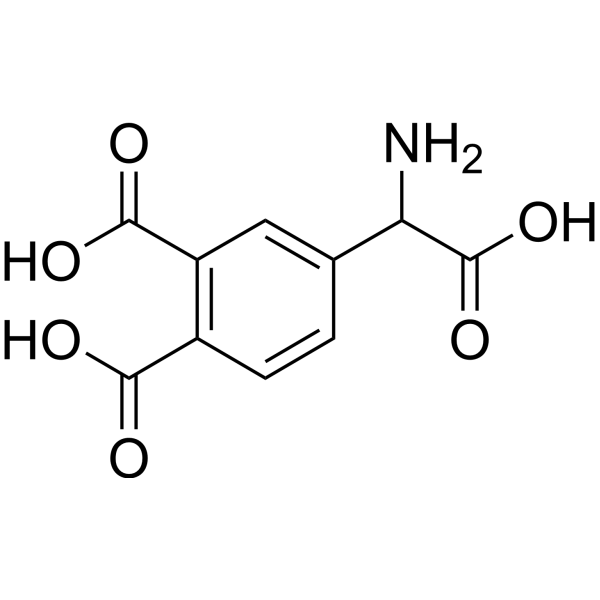
- HY-15068A
-
|
FG9202 disodium
|
|
|
|
NBQX disodium (FG9202 disodium) is a highly selective and competitive AMPA receptor antagonist. NBQX disodium has neuroprotective and anticonvulsant activity .
|
-
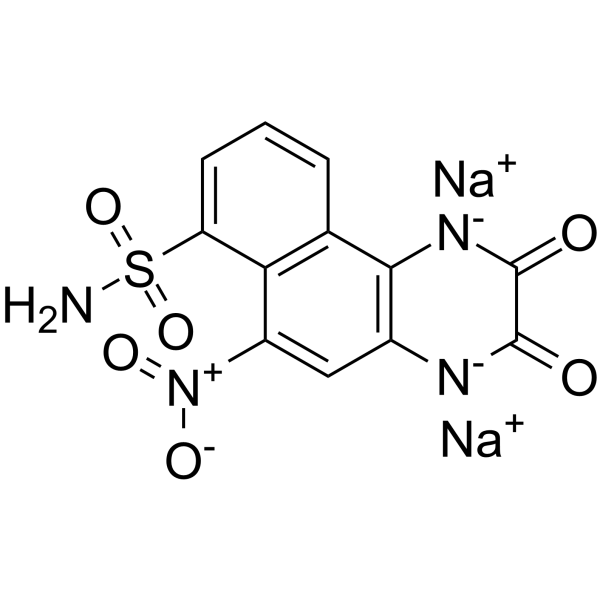
- HY-15082
-
|
BIIR 561
|
iGluR
Sodium Channel
|
Neurological Disease
|
|
Irampanel (BIIR 561) is an AMPA receptor and voltage-dependent sodium channel blocker. Irampanel inhibits kainate-induced currents in rat cortical neurons .
|
-
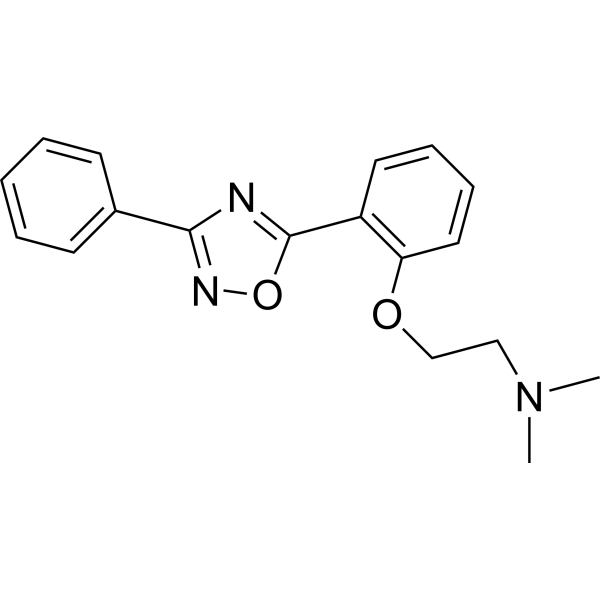
- HY-103228
-
|
LY300168 hydrochloride
|
iGluR
|
Neurological Disease
|
|
GYKI 53655 (LY300168) hydrochloride is an α-amino-3-hydroxy-5-methylisoxazole-4-propionic acid (AMPA) antagonist.
|
-
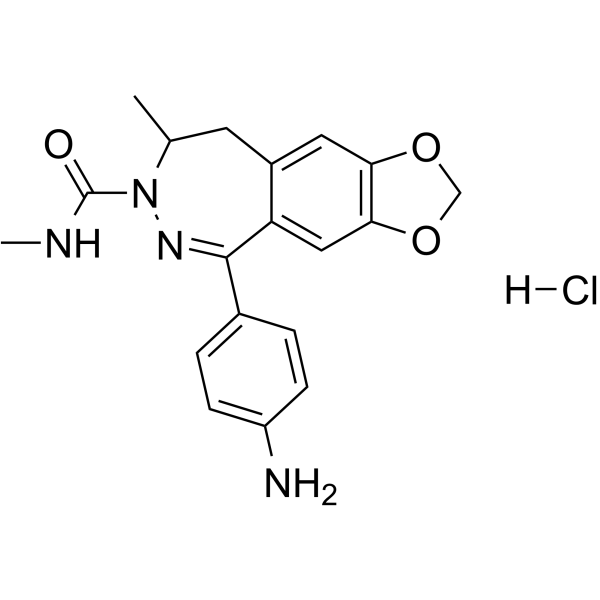
- HY-101363
-
|
Piperonylic acid piperidide
|
iGluR
|
Neurological Disease
|
|
1-BCP (Piperonylic acid piperidide) is a centrally active agent that modulates AMPA receptor gated currents. 1-BCP is a memory-enhancing agent .
|
-
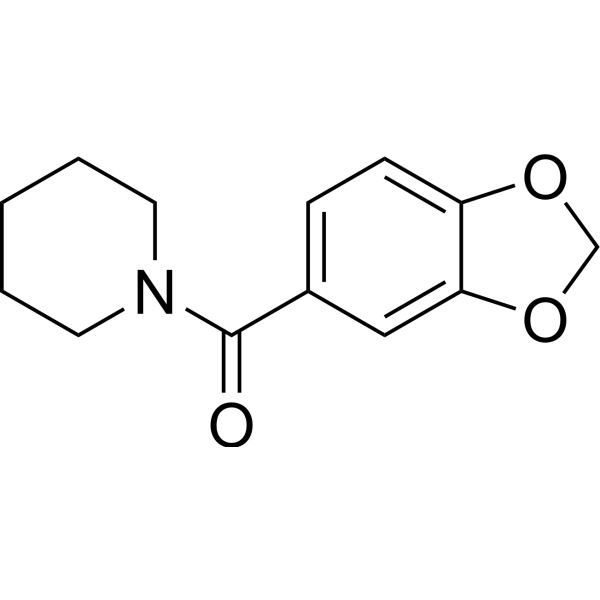
- HY-15072
-
|
YM 872
|
iGluR
|
Metabolic Disease
|
|
Zonampanel (YM 872) is a selective antagonist of the glutamate receptor subtype, α-amino-3-hydroxy-5-methylisoxazole-4-propionic acid (AMPA) receptor.
|
-

- HY-15069
-
|
ZK200775; MPQX
|
iGluR
|
Neurological Disease
|
|
Fanapanel (ZK200775) is a highly selective AMPA/kainate antagonist with little activity against NMDA; have Ki values of 3.2 nM, 100 nM, and 8.5 μM against quisqualate, kainate, and NMDA, respectively.
|
-

- HY-15069A
-
|
ZK200775 hydrate; MPQX hydrate
|
iGluR
|
Neurological Disease
|
|
Fanapanel hydrate (ZK200775 hydrate) is a highly selective AMPA/kainate antagonist with little activity against NMDA; have Ki values of 3.2 nM, 100 nM, and 8.5 μM against quisqualate, kainate, and NMDA, respectively.
|
-
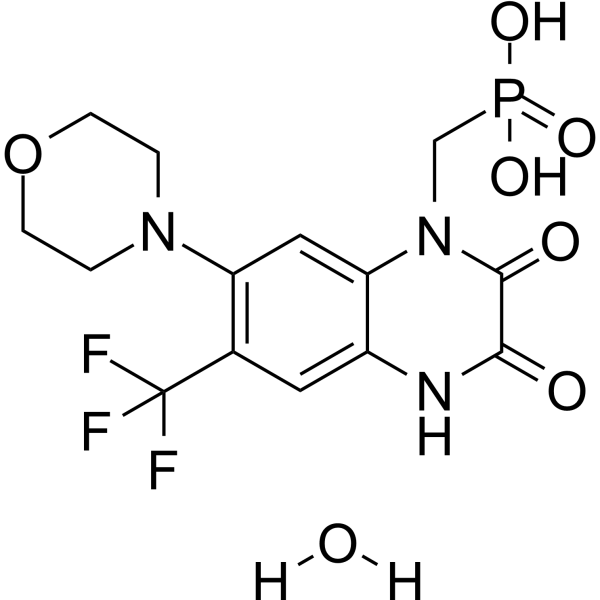
- HY-18689
-
|
|
iGluR
|
Neurological Disease
|
|
SYM2206 is a potent and non-competitive AMPA receptor antagonist, with an IC50 of 1.6 μM. SYM2206 blocks Nav1.6-mediated persistent currents .
|
-
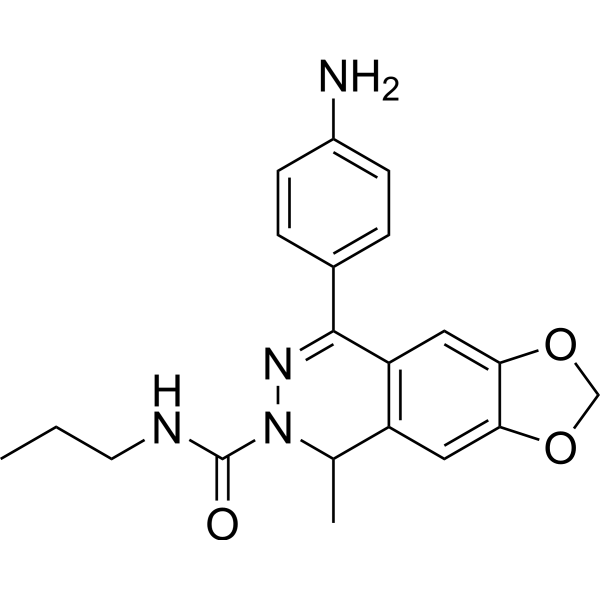
- HY-107603
-
|
|
iGluR
|
Neurological Disease
|
|
NS3763 is a selective and noncompetitive GLUK5 receptor antagonist with an IC50 of 1.6 µM. NS3763 does not show significant antagonistic properties on GLUK6, AMPA or NMDA receptors .
|
-
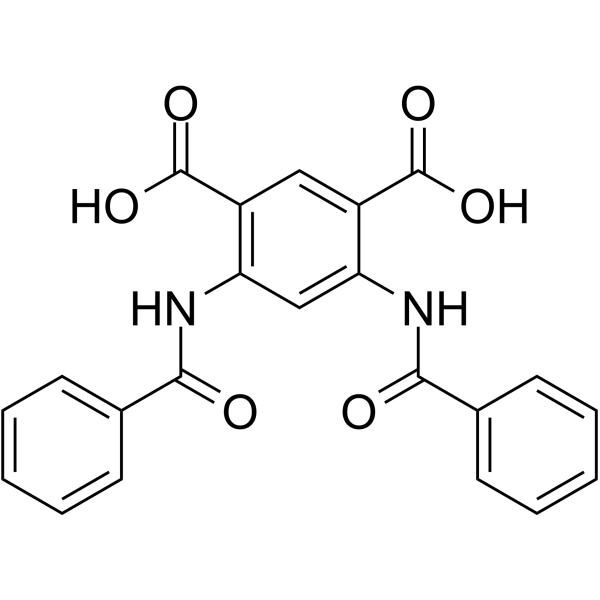
- HY-125931
-
|
DM232
|
iGluR
|
Neurological Disease
|
|
Unifiram (DM232) is acts as a potent cognition enhancer through the activation of the AMPA-mediated neurotransmission system. Unifiram (DM232) has the potential for amnesia prevention and neurodegenerative disorder research .
|
-
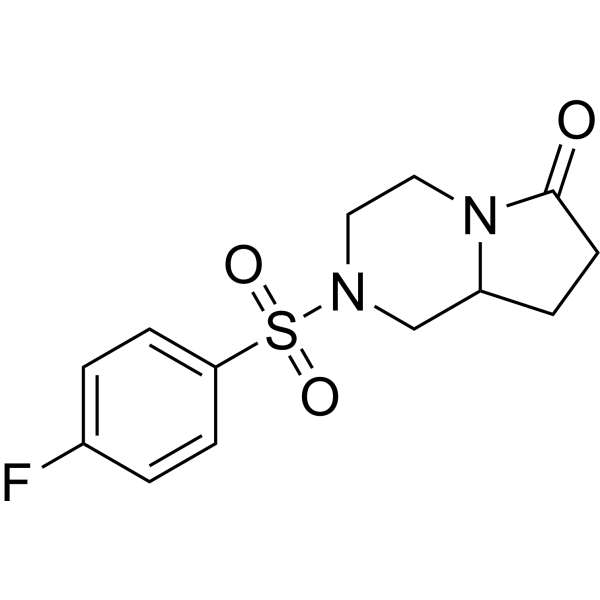
- HY-107696
-
-
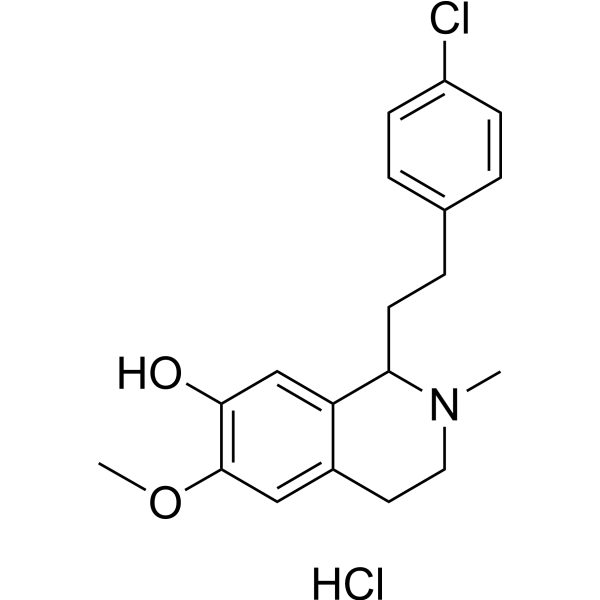
- HY-15067
-
DNQX
4 Publications Verification
FG 9041
|
iGluR
|
Cancer
|
|
DNQX (FG 9041), a quinoxaline derivative, is a selective, potent competitive non-NMDA glutamate receptor antagonist (IC50s = 0.5, 2 and 40 μM for AMPA, kainate and NMDA receptors, respectively) .
|
-
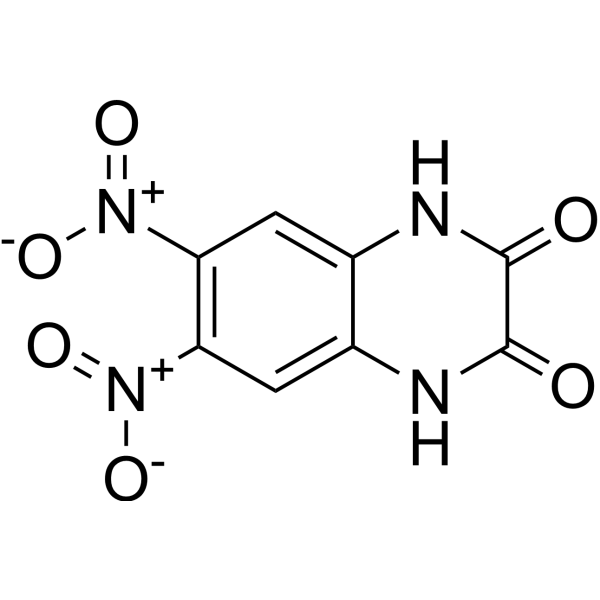
- HY-W015309S
-
|
|
iGluR
|
Neurological Disease
|
|
Decanoic acid-d3 is the deuterium labeled Decanoic acid. Decanoic acid, a component of medium chain triclycerides, is a brain-penetrant and non-competitive inhibitor of AMPA receptor. Decanoic acid has antiseizure effects[1][2][3].
|
-
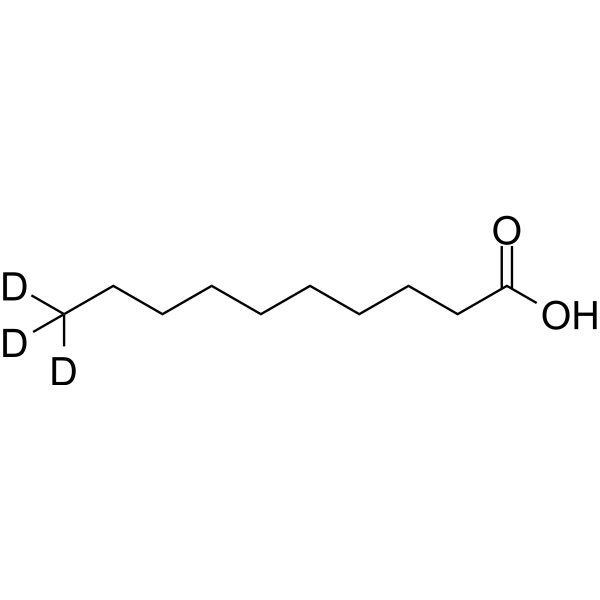
- HY-103233
-
|
FG 9041 disodium salt
|
iGluR
|
Cancer
|
|
DNQX (FG 9041) disodium salt, a quinoxaline derivative, is a selective, potent competitive non-NMDA glutamate receptor antagonist (IC50s = 0.5, 2 and 40 μM for AMPA, kainate and NMDA receptors, respectively) .
|
-
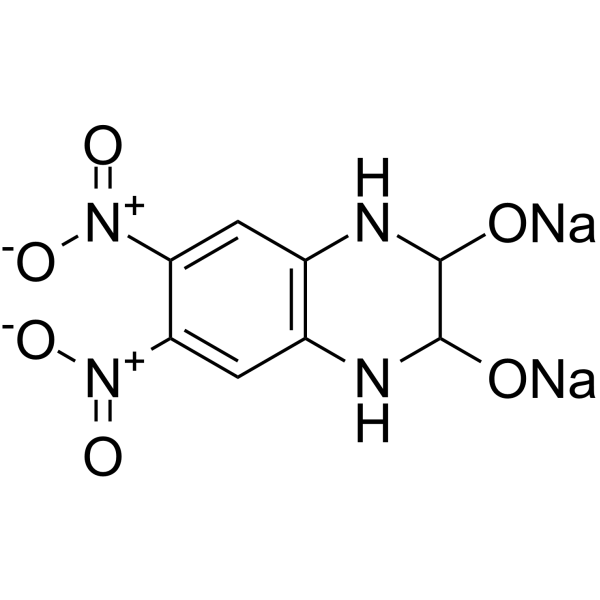
- HY-W015309S2
-
|
|
iGluR
|
Neurological Disease
|
|
Decanoic acid-d2 is the deuterium labeled Decanoic acid. Decanoic acid, a component of medium chain triclycerides, is a brain-penetrant and non-competitive inhibitor of AMPA receptor. Decanoic acid has antiseizure effects[1][2][3].
|
-
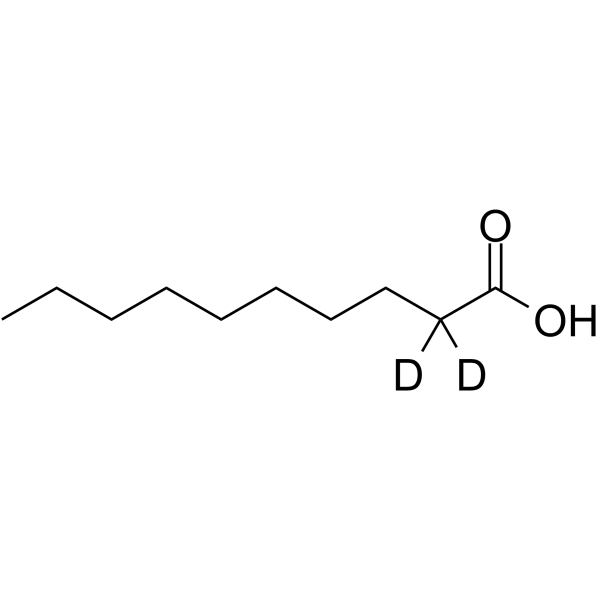
- HY-W015309S1
-
|
|
iGluR
|
Neurological Disease
|
|
Decanoic acid-d199 is the deuterium labeled Decanoic acid. Decanoic acid, a component of medium chain triclycerides, is a brain-penetrant and non-competitive inhibitor of AMPA receptor. Decanoic acid has antiseizure effects[1][2][3].
|
-

- HY-W015309S3
-
|
|
iGluR
|
|
|
Decanoic acid-d5 is the deuterium labeled Decanoic acid. Decanoic acid, a component of medium chain triclycerides, is a brain-penetrant and non-competitive inhibitor of AMPA receptor. Decanoic acid has antiseizure effects[1][2][3].
|
-
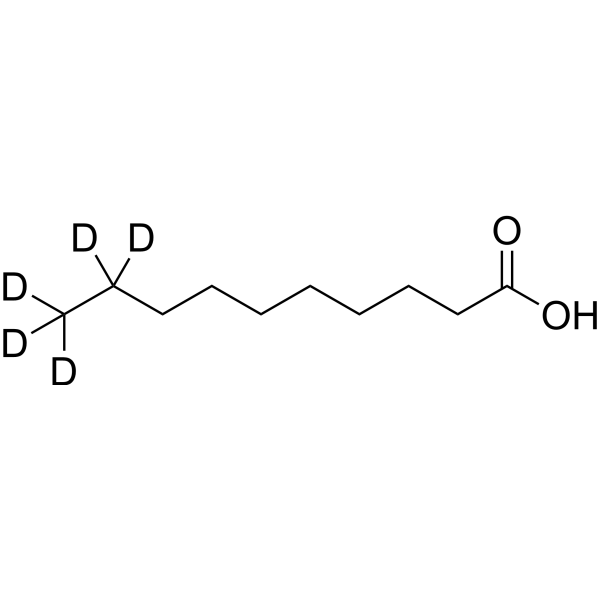
- HY-114379
-
|
|
LPL Receptor
|
Inflammation/Immunology
|
|
AS2717638 is an oral active and selective lysophosphatidic acid receptor 5 (LPA5) antagonist, with an IC50 of 38 nM for hLPA5. AS2717638 also significantly improves PGE2-, PGF2α-, and AMPA-induced allodynia .
|
-
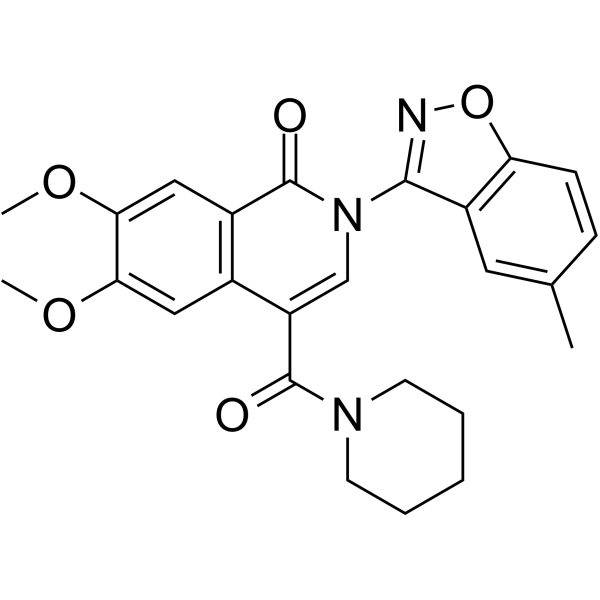
- HY-12508
-
|
|
iGluR
|
Neurological Disease
|
|
CMPDA is a positive allosteric modulator of AMPA receptors with EC50s of 45.4 ± 4.2 nM/63.4 ± 5.6 nM for GluA2i/GluA2o receptor.
|
-
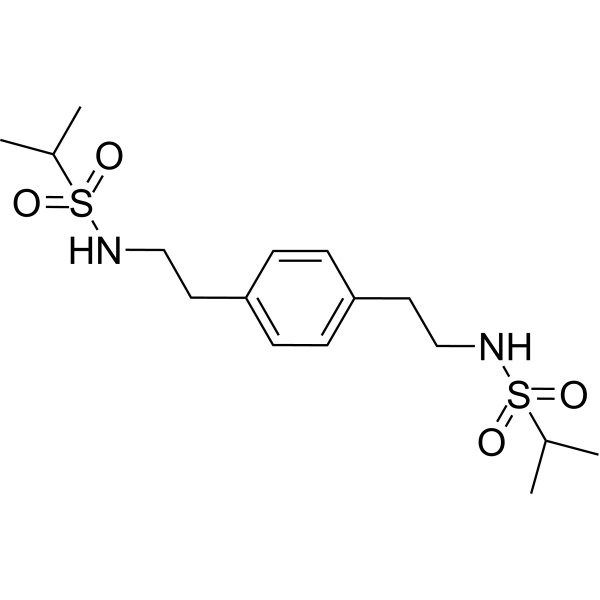
- HY-10933S
-
|
BDP 12-d10
|
Isotope-Labeled Compounds
iGluR
|
Neurological Disease
|
|
CX516-d10 is the deuterium labeled CX516. CX516 (BDP 12) is an ampakine and acts as an AMPA receptor positive allosteric modulator for the research of Alzheimer's disease, schizophrenia and mild cognitive impairment (MCI)[1].
|
-

- HY-101310
-
|
|
|
|
|
SYM 2081 is a high-affinity ligand and potent, selective agonist of kainate receptors, inhibits [ 3H]-kainate binding with an IC50 of 35 nM, almost 3000- and 200-fold selectivity for kainate receptors over AMPA and NMDA receptors respectively .
|
-

- HY-107605
-
|
|
iGluR
|
Neurological Disease
|
|
UBP296 is a potent and selective antagonist of GLUK5-containing kainate receptor in the spinal cord. UBP296 reversibly blocks ATPA-induced depressions of synaptic transmission, and affects AMPA receptor-mediated synaptic transmission directly in rat hippocampal slices .
|
-
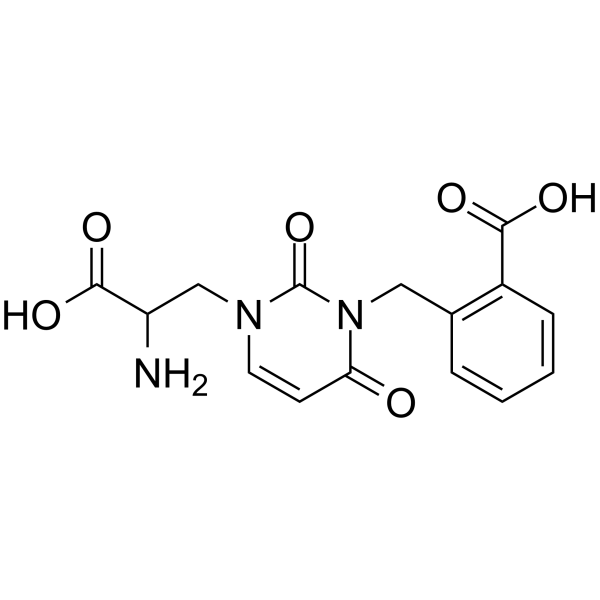
- HY-121964
-
|
|
iGluR
|
Neurological Disease
|
|
Cis-piperidine-2,3-dicarboxylic acid is a non-specific antagonist of NMDA, AMPA and kainate ionotropic receptors and a partial agonist for NMDA receptors. Cis-piperidine-2,3-dicarboxylic acid can be used in blocking general excitatory synaptic transmissions .
|
-
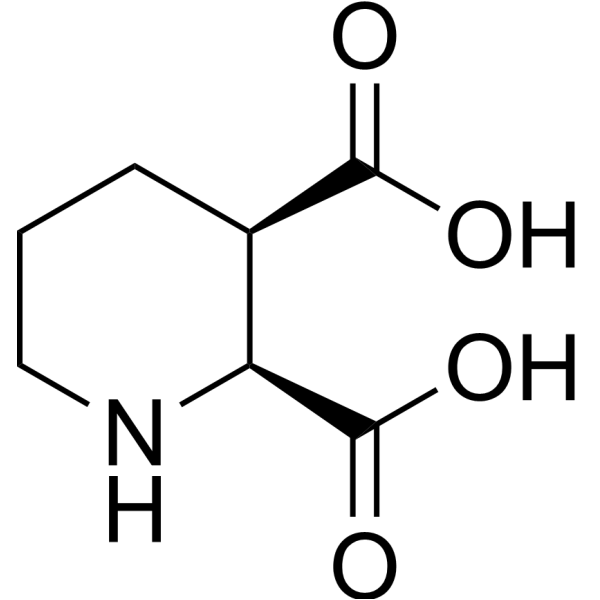
- HY-14608S
-
|
|
Endogenous Metabolite
iGluR
Ferroptosis
Apoptosis
|
Neurological Disease
|
|
L-Glutamic acid- 13C is the 13C-labeled L-Glutamic acid. L-Glutamic acid acts as an excitatory transmitter and an agonist at all subtypes of glutamate receptors (metabotropic, kainate, NMDA, and AMPA). L-Glutamic acid shows a direct activating effect on the release of DA from dopaminergic terminals.
|
-
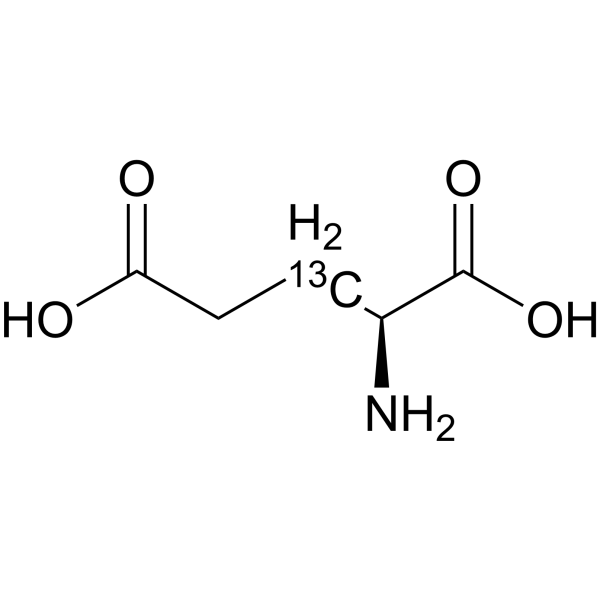
- HY-14608S7
-
|
|
Endogenous Metabolite
iGluR
Ferroptosis
Apoptosis
|
Neurological Disease
|
|
L-Glutamic acid-d5 is the deuterium labeled L-Glutamic acid. L-Glutamic acid acts as an excitatory transmitter and an agonist at all subtypes of glutamate receptors (metabotropic, kainate, NMDA, and AMPA). L-Glutamic acid shows a direct activating effect on the release of DA from dopaminergic terminals.
|
-
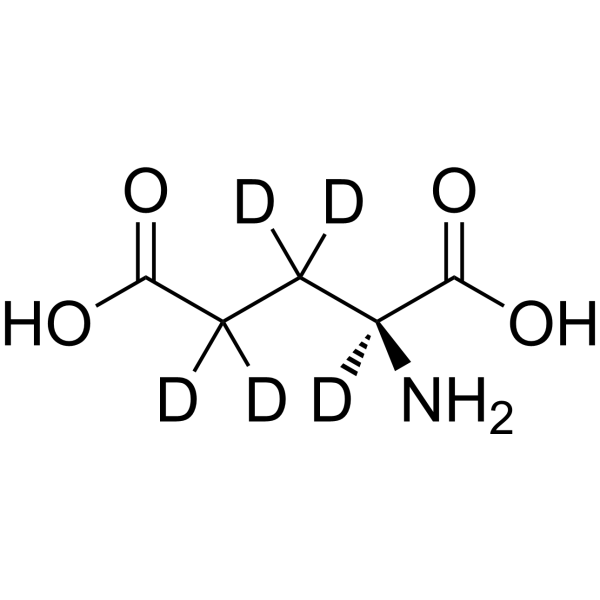
- HY-14608S8
-
|
|
Endogenous Metabolite
iGluR
Ferroptosis
Apoptosis
|
Neurological Disease
|
|
L-Glutamic acid-d3 is the deuterium labeled L-Glutamic acid. L-Glutamic acid acts as an excitatory transmitter and an agonist at all subtypes of glutamate receptors (metabotropic, kainate, NMDA, and AMPA). L-Glutamic acid shows a direct activating effect on the release of DA from dopaminergic terminals.
|
-

- HY-10936
-
|
|
iGluR
|
Neurological Disease
|
|
S 18986 is a selective, orally active, brain penetrant positive allosteric modulator of AMPA-type receptors. S 18986 shows cognitive enhancing properties in rodents. S 18986 activates the release of noradrenaline and acetylcholine in rat hippocampus and enhances rat memory in object-recognition tests .
|
-

- HY-19435A
-
|
|
iGluR
Cytochrome P450
|
Neurological Disease
|
|
GYKI-47261 dihydrochloride is a competitive, orally active, and selective AMPA receptor antagonist with an IC50 of 2.5 μM. GYKI-47261 has broad spectrum anticonvulsive activity and neuroprotective effects. GYKI-47261 dihydrochloride is also a potent inducer of CYP2E1 .
|
-
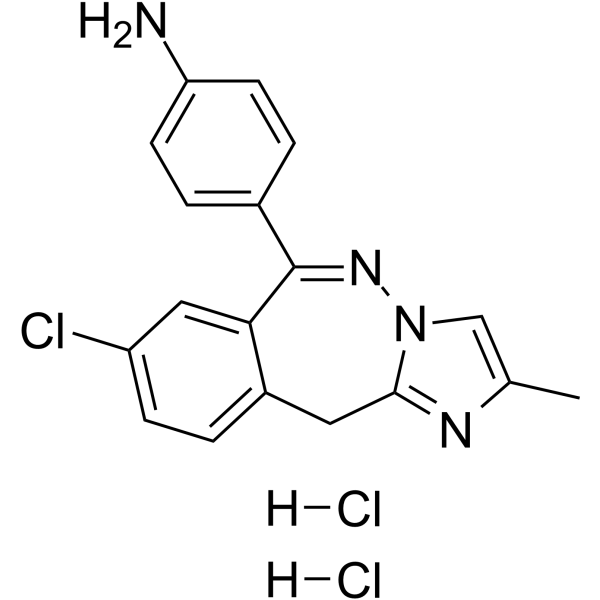
- HY-14608S5
-
|
|
Endogenous Metabolite
iGluR
Ferroptosis
Apoptosis
|
Neurological Disease
|
|
L-Glutamic acid- 13C5 is the 13C-labeled L-Glutamic acid. L-Glutamic acid acts as an excitatory transmitter and an agonist at all subtypes of glutamate receptors (metabotropic, kainate, NMDA, and AMPA). L-Glutamic acid shows a direct activating effect on the release of DA from dopaminergic terminals.
|
-

- HY-109046
-
|
CX-1632; S-47445
|
iGluR
mTOR
|
Neurological Disease
|
|
Tulrampator (S-47445) is an orally active selective AMPA receptor modulator. Tulrampator possesses procognitive, enhancing synaptic plasticity, anti-depressant-anxiolytic-like, procognitive and potential neuroprotective properties. Tulrampator can be used for research of alzheimer’s disease and in major depressive disorder .
|
-
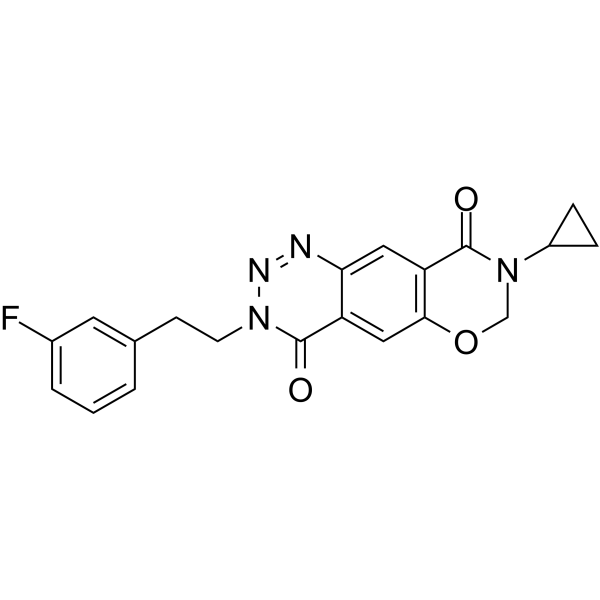
- HY-103229
-
|
|
iGluR
|
Neurological Disease
|
|
Cl-HIBO is a highly subtype-selective GluR1/2 agonist (EC50=4.7 and 1.7 μM, respectively). Cl-HIBO is a potent AMPA receptor agonist (IC50=0.22 μM). Cl-HIBO has desensitizing properties .
|
-
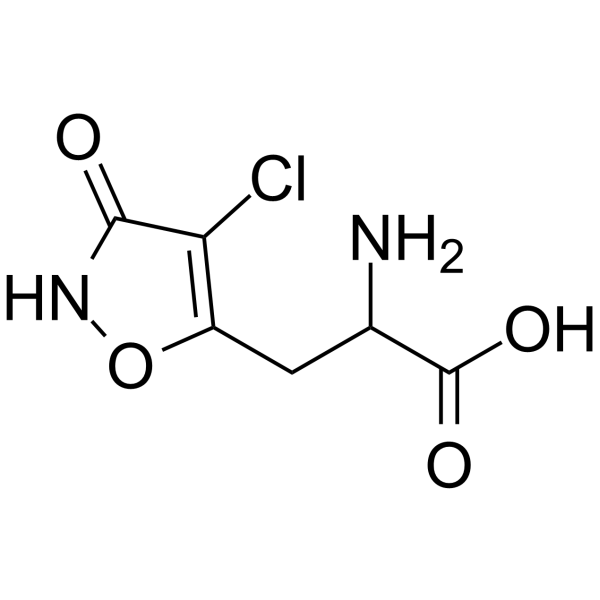
- HY-14608S2
-
|
|
Endogenous Metabolite
iGluR
Ferroptosis
Apoptosis
|
Neurological Disease
|
|
L-Glutamic acid- 15N is the 15N-labeled L-Glutamic acid. L-Glutamic acid acts as an excitatory transmitter and an agonist at all subtypes of glutamate receptors (metabotropic, kainate, NMDA, and AMPA). L-Glutamic acid shows a direct activating effect on the release of DA from dopaminergic terminals[1].
|
-
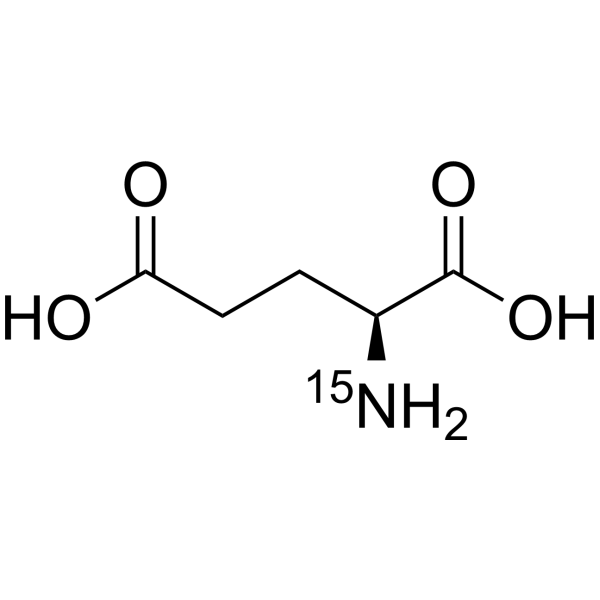
- HY-B0122
-
-
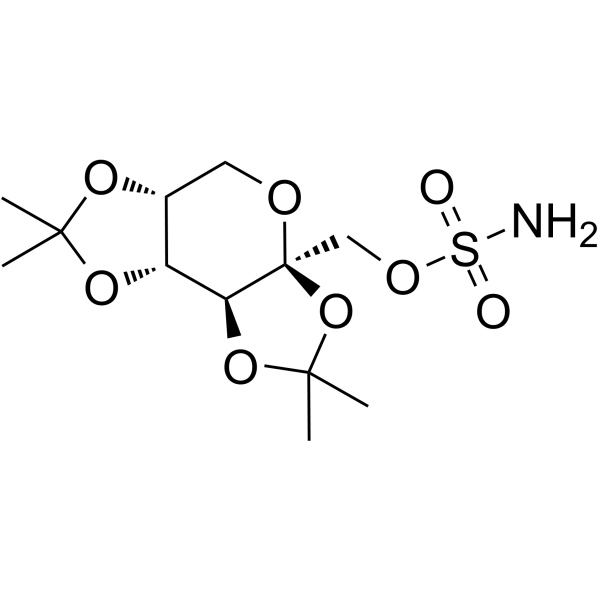
- HY-14608
-
|
|
Endogenous Metabolite
iGluR
Ferroptosis
Apoptosis
|
Neurological Disease
|
|
L-Glutamic acid is an excitatory amino acid neurotransmitter that acts as an agonist for all subtypes of glutamate receptors (metabolic rhodophylline, NMDA, and AMPA). L-Glutamic acid has an agonist effect on the release of DA from dopaminergic nerve endings. L-Glutamic acid can be used in the study of neurological diseases .
|
-
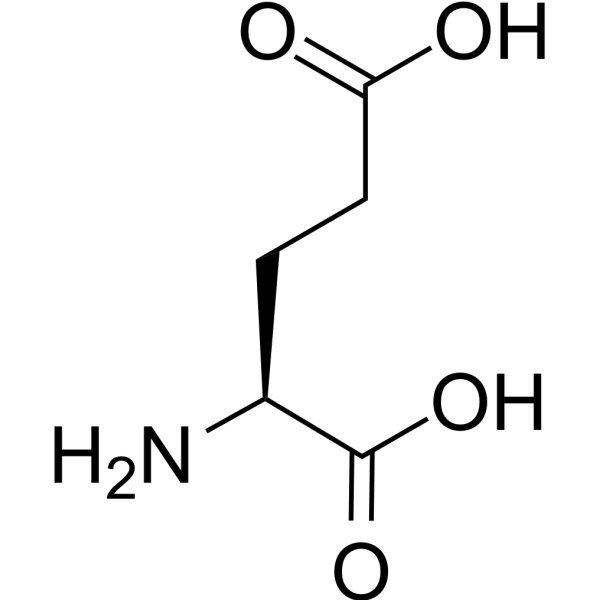
- HY-14608S1
-
|
|
Endogenous Metabolite
iGluR
Ferroptosis
Apoptosis
|
Neurological Disease
|
|
L-Glutamic acid-1- 13C is the 13C-labeled L-Glutamic acid. L-Glutamic acid acts as an excitatory transmitter and an agonist at all subtypes of glutamate receptors (metabotropic, kainate, NMDA, and AMPA). L-Glutamic acid shows a direct activating effect on the release of DA from dopaminergic terminals.
|
-
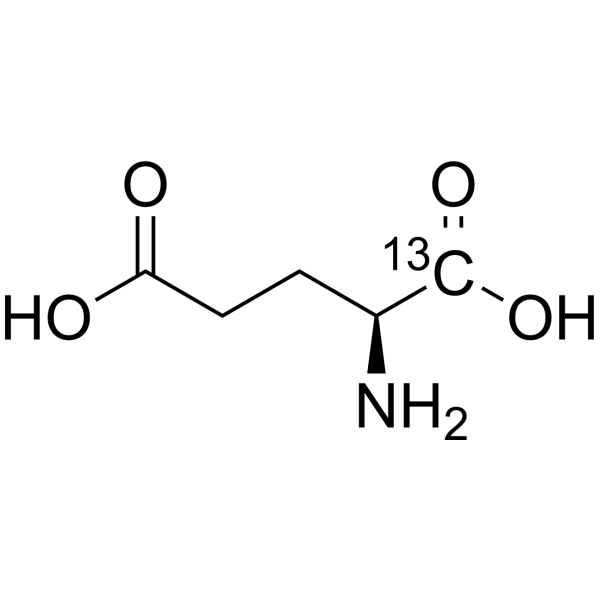
- HY-15066A
-
CNQX disodium
Maximum Cited Publications
9 Publications Verification
FG9065 disodium
|
|
|
|
CNQX disodium (FG9065 disodium) is a potent and competitive AMPA/kainate receptor antagonist with IC50s of 0.3 μM and 1.5 μM, respectively. CNQX disodium is a competitive non-NMDA receptor antagonist . CNQX disodium blocks the expression of fear-potentiated startle in rats .
|
-
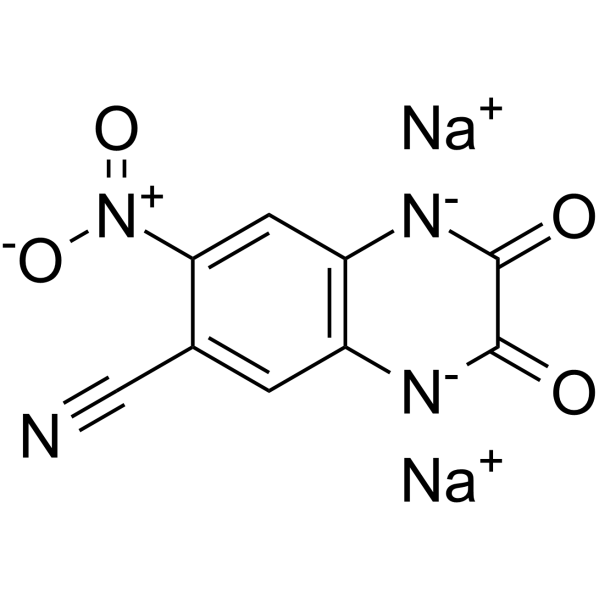
- HY-14608S6
-
-
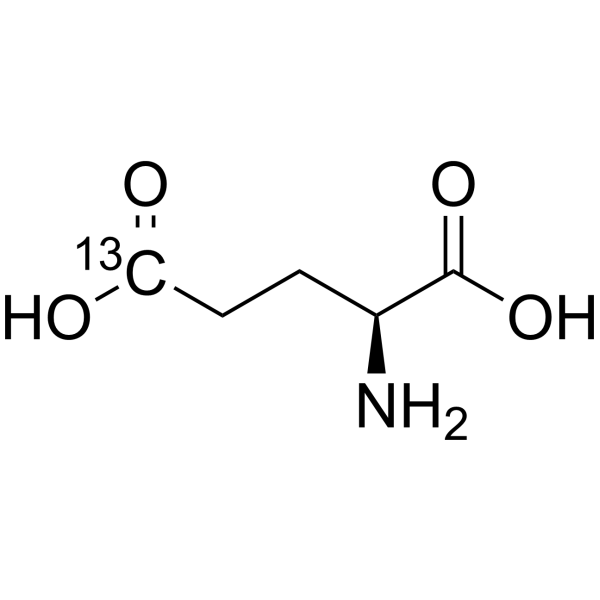
- HY-103232
-
|
|
mGluR
|
Neurological Disease
|
IEM-1925 bromide is an orally active glutamate receptor antagonist, increases the latent period and decreases the duration of status epilepticus in rats in a lithium-pilocarpine model of epilepsy .
|
-
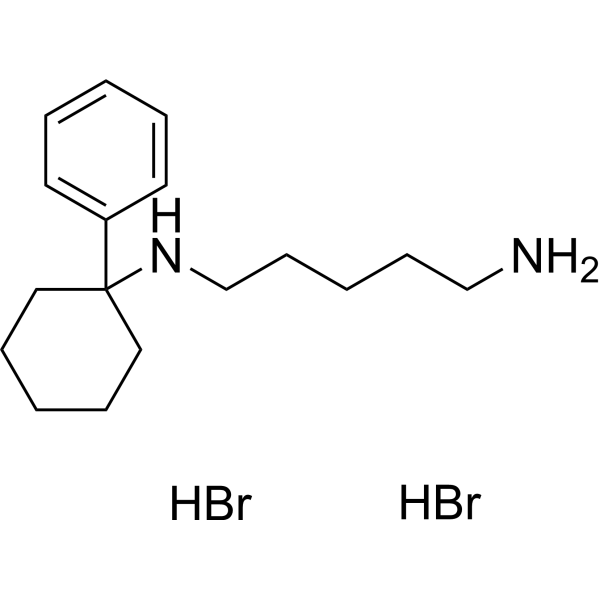
- HY-14608A
-
|
|
iGluR
Apoptosis
Ferroptosis
Endogenous Metabolite
|
Neurological Disease
|
|
L-Glutamic acid monosodium salt is an excitatory amino acid neurotransmitter that acts as an agonist for all subtypes of glutamate receptors (metabolic rhodophylline, NMDA, and AMPA). L-Glutamic acid monosodium salt has an agonist effect on the release of DA from dopaminergic nerve endings. L-Glutamic acid monosodium salt can be used in the study of neurological diseases .
|
-
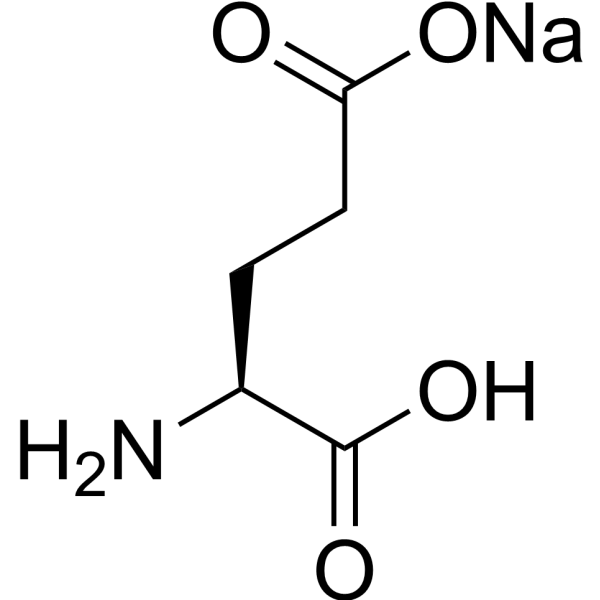
- HY-14608S3
-
-
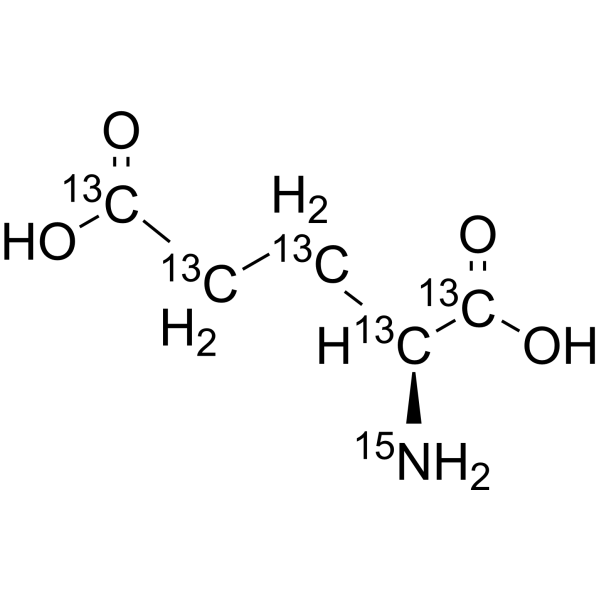
- HY-14608S9
-
-

- HY-B0122A
-
|
McN 4853 lithium; RWJ 17021 lithium
|
iGluR
GABA Receptor
Sodium Channel
Calcium Channel
Potassium Channel
Carbonic Anhydrase
|
Neurological Disease
|
|
Topiramate (McN 4853) lithium is a broad-spectrum antiepileptic agent. Topiramate lithium is a GluR5 receptor antagonist. Topiramate produces its antiepileptic effects through enhancement of GABAergic activity, inhibition of kainate/AMPA receptors, inhibition of voltage-sensitive sodium and calcium channels, increases in potassium conductance, and inhibition of carbonic anhydrase .
|
-
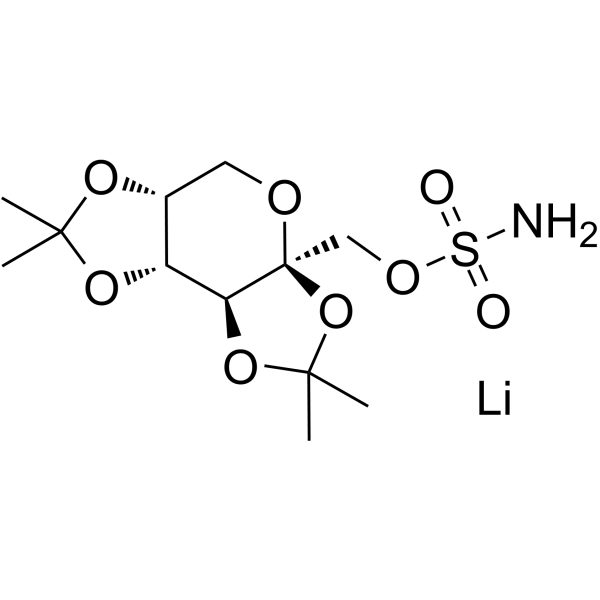
- HY-14608S10
-
|
|
Apoptosis
iGluR
Ferroptosis
Endogenous Metabolite
|
Neurological Disease
|
|
L-Glutamic acid- 13C2 is the 13C labeled L-Glutamic acid[1]. L-Glutamic acid acts as an excitatory transmitter and an agonist at all subtypes of glutamate receptors (metabotropic, kainate, NMDA, and AMPA). L-Glutamic acid shows a direct activating effect on the release of DA from dopaminergic terminals[2].
|
-

- HY-N3298
-
|
|
Adrenergic Receptor
|
Cardiovascular Disease
Neurological Disease
|
|
Meranzin is an absorbed bioactive compound from the Traditional Chinese Medicine (TCM) Chaihu-Shugan-San (CSS). Meranzin, isolated from leaves of Murraya exotica L., regulates the shared alpha 2-adrenoceptor and involves the AMPA-ERK1/2–BDNF signaling pathway. Meranzin has the potential for the prevention of the comorbidity of atherosclerosis and depression .
|
-
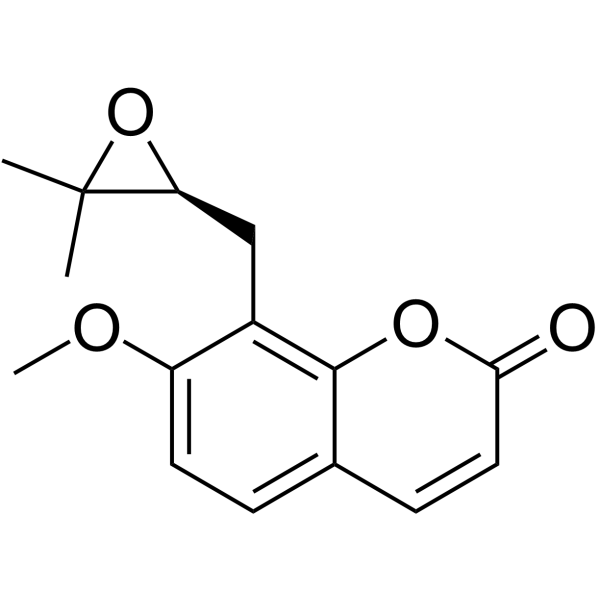
- HY-14608S4
-
-
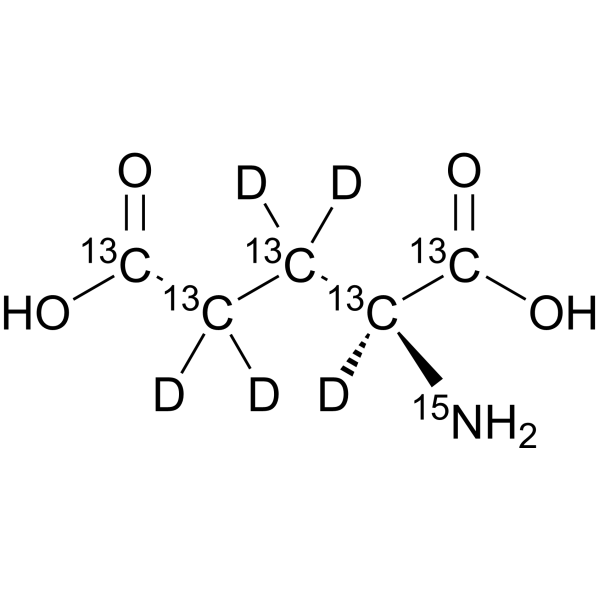
- HY-124160
-
|
|
iGluR
|
Neurological Disease
|
|
JNJ-56022486 is an orally active and potent negative AMPA receptor modulator (Ki=19 nM) selective for?TARP-γ8. JNJ-56022486 is also a TARP-γ8 receptor antagonist, with blood?brain?barrier (BBB) permeability. JNJ-56022486 can be used for research of Epilepsy .
|
-
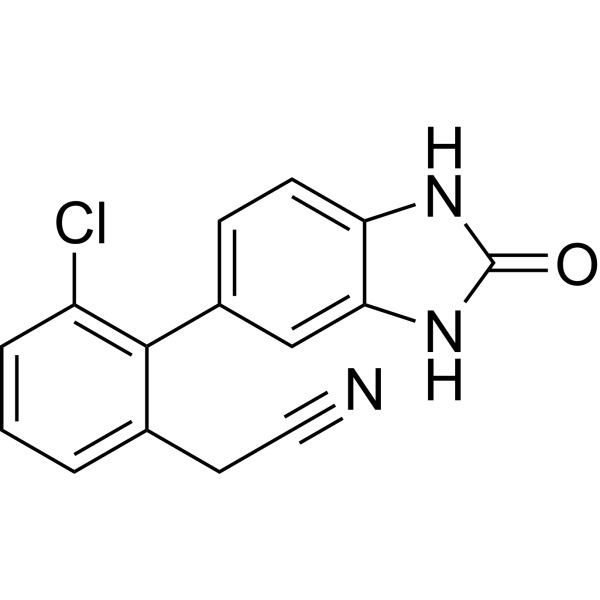
- HY-12597
-
|
L-Quisqualic acid
|
iGluR
mGluR
|
Neurological Disease
|
|
Quisqualic acid (L-Quisqualic acid), a natural analog of glutamate, is a potent and pan two subsets (iGluR and mGluR) of excitatory amino acid (EAA) agonist with an EC50 of 45 nM and a Ki of 10 nM for mGluR1R. Quisqualic acid is isolated from the fruits of Quisqualis indica .
|
-
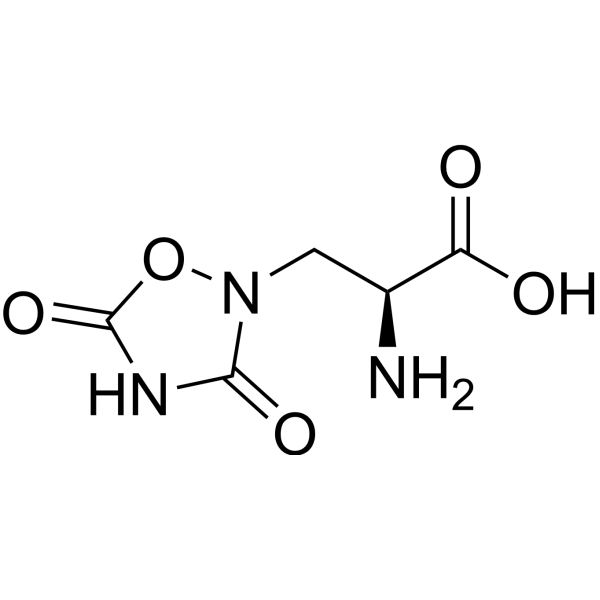
- HY-15079
-
|
GYKI-53773; LY-300164
|
iGluR
Apoptosis
|
Neurological Disease
Cancer
|
|
Talampanel (LY300164) is an orally and selective α-amino-3-hydroxy-5-methyl-4-isoxazolepropionate (AMPA) receptor antagonis with anti-seizure activity . Talampanel (IVAX) has neuroprotective effects in rodent stroke models . Talampanel attenuates caspase-3 dependent apoptosis in mouse brain .
|
-

- HY-100781
-
|
D-APB; D-2-Amino-4-phosphonobutyric acid
|
|
|
|
D-AP4 (D-APB; D-2-Amino-4-phosphonobutyric acid), a phosphono analogue of glutamate, is an NMDA broad spectrum excitatory amino acid receptor antagonist. D-AP4 also is an agonist for a quisqualate-sensitized AP6 site in hippocampus. D-AP4 inhibits AMPA receptor-stimulated 57Co 2+ influx in cultured cerebellar granule cells (IC50 ≥ 100 μM) .
|
-

- HY-116330A
-
|
Hyperforin DCHA
|
TRP Channel
Calcium Channel
|
Neurological Disease
|
|
Hyperforin dicyclohexylammonium salt (Hyperforin DCHA) is a transient receptor canonical 6 (TRPC6) channels activator. Hyperforin dicyclohexylammonium salt modulates Ca 2+ levels by activating Ca 2+-conducting non-selective canonical TRPC6 channels. Hyperforin dicyclohexylammonium salt also shows diverse pharmacological activities including anti-depression, anti-tumor, anti-dementia, anti-diabetes. Hyperforin dicyclohexylammonium salt modulates γδ T cells to secret IL-17α, improves Imiquimod (HY-B0180)-induced psoriasis-like mice model .
|
-
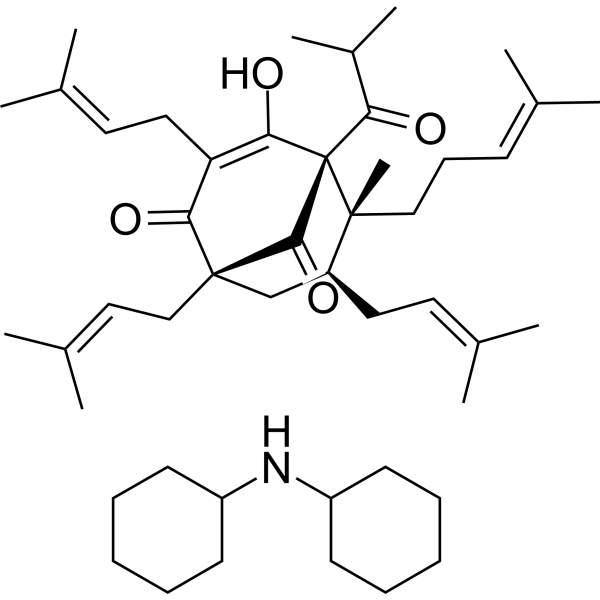
- HY-113439
-
|
|
Apoptosis
|
Cardiovascular Disease
Inflammation/Immunology
|
|
12-HETE, a major metabolic product of arachidonic acid using 12-LOX catalysis, inhibits cell apoptosis in a dose-dependent manner. 12-HETE promotes the activation and nuclear translocation of NF-κB through the integrin-linked kinase (ILK) pathway .12-HETE has both anti-thrombotic and pro-thrombotic effects . 12-HETE is a neuromodulator .
|
-
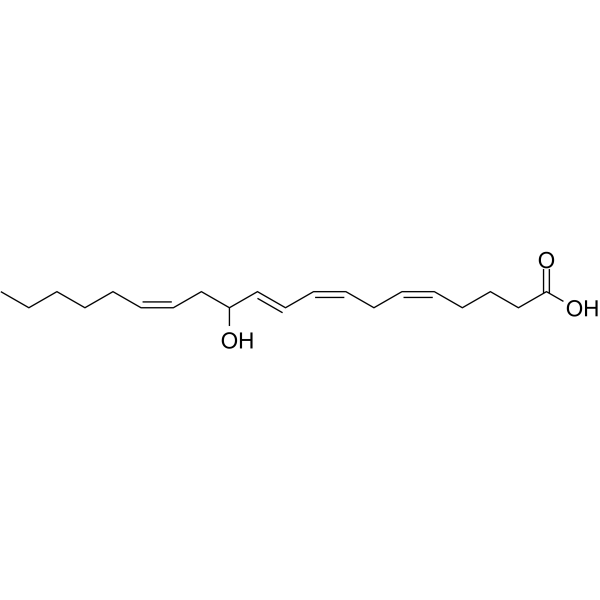
| Cat. No. |
Product Name |
Target |
Research Area |
-
- HY-P3355
-
|
|
iGluR
|
Neurological Disease
|
|
p-fin4 is a peptide inhibitor of STEP Phosphatase-GluA2 AMPA receptor interaction with a Ki of 0.4 μM. p-fin4 restores the memory deficits and displays anxiolytic and antidepressant effects in a scopolamine-treated rat model. p-fin4 is a promising lead compound for novel cognitive enhancers and/or behavioral modulators .
|
-
- HY-P3340
-
|
|
iGluR
|
Neurological Disease
|
|
Leptin (116-130) is a bioactive leptin fragment. Leptin (116-130) promotes AMPA receptor trafficking to synapses and facilitate activity-dependent hippocampal synaptic plasticity. Leptin (116-130) prevents hippocampal synaptic disruption and neuronal cell death in models of amyloid toxicity. Leptin (116-130) has the potential for the research of Alzheimer's disease (AD) .
|
-
- HY-P3354
-
|
|
iGluR
|
Neurological Disease
|
|
p3Ysh-3 is a peptide inhibitor of STEP Phosphatase-GluA2 AMPA receptor interaction with a Ki of 1.09 μM. p3Ysh-3 restores the memory deficits and displays anxiolytic and antidepressant effects in a scopolamine-treated rat model. p3Ysh-3 is a promising lead compound for novel cognitive enhancers and/or behavioral modulators .
|
-
- HY-P5487
-
|
|
Peptides
|
Others
|
|
GluR23Y is a biological active peptide. (This GluR23Y peptide was used in ELISA cell-surface assay for the insulin-stimulated endocytosis of native AMPA receptors in cultured hippocampal neurons. GluR23Y prevented any insulin-induced reduction. The blockade of insulin action was observed when the GluR23Y peptide was delivered into neurons by fusing it to the membrane transduction domain of HIV-1.)
|
| Cat. No. |
Product Name |
Category |
Target |
Chemical Structure |
| Cat. No. |
Product Name |
Chemical Structure |
-
- HY-W015309S
-
|
|
|
Decanoic acid-d3 is the deuterium labeled Decanoic acid. Decanoic acid, a component of medium chain triclycerides, is a brain-penetrant and non-competitive inhibitor of AMPA receptor. Decanoic acid has antiseizure effects[1][2][3].
|
-

-
- HY-W015309S1
-
|
|
|
Decanoic acid-d199 is the deuterium labeled Decanoic acid. Decanoic acid, a component of medium chain triclycerides, is a brain-penetrant and non-competitive inhibitor of AMPA receptor. Decanoic acid has antiseizure effects[1][2][3].
|
-

-
- HY-W015309S3
-
|
|
|
Decanoic acid-d5 is the deuterium labeled Decanoic acid. Decanoic acid, a component of medium chain triclycerides, is a brain-penetrant and non-competitive inhibitor of AMPA receptor. Decanoic acid has antiseizure effects[1][2][3].
|
-

-
- HY-W015309S2
-
|
|
|
Decanoic acid-d2 is the deuterium labeled Decanoic acid. Decanoic acid, a component of medium chain triclycerides, is a brain-penetrant and non-competitive inhibitor of AMPA receptor. Decanoic acid has antiseizure effects[1][2][3].
|
-

-
- HY-10933S
-
|
|
|
CX516-d10 is the deuterium labeled CX516. CX516 (BDP 12) is an ampakine and acts as an AMPA receptor positive allosteric modulator for the research of Alzheimer's disease, schizophrenia and mild cognitive impairment (MCI)[1].
|
-

-
- HY-14608S
-
|
|
|
L-Glutamic acid- 13C is the 13C-labeled L-Glutamic acid. L-Glutamic acid acts as an excitatory transmitter and an agonist at all subtypes of glutamate receptors (metabotropic, kainate, NMDA, and AMPA). L-Glutamic acid shows a direct activating effect on the release of DA from dopaminergic terminals.
|
-

-
- HY-14608S7
-
|
|
|
L-Glutamic acid-d5 is the deuterium labeled L-Glutamic acid. L-Glutamic acid acts as an excitatory transmitter and an agonist at all subtypes of glutamate receptors (metabotropic, kainate, NMDA, and AMPA). L-Glutamic acid shows a direct activating effect on the release of DA from dopaminergic terminals.
|
-

-
- HY-14608S8
-
|
|
|
L-Glutamic acid-d3 is the deuterium labeled L-Glutamic acid. L-Glutamic acid acts as an excitatory transmitter and an agonist at all subtypes of glutamate receptors (metabotropic, kainate, NMDA, and AMPA). L-Glutamic acid shows a direct activating effect on the release of DA from dopaminergic terminals.
|
-

-
- HY-14608S5
-
|
|
|
L-Glutamic acid- 13C5 is the 13C-labeled L-Glutamic acid. L-Glutamic acid acts as an excitatory transmitter and an agonist at all subtypes of glutamate receptors (metabotropic, kainate, NMDA, and AMPA). L-Glutamic acid shows a direct activating effect on the release of DA from dopaminergic terminals.
|
-

-
- HY-14608S2
-
|
|
|
L-Glutamic acid- 15N is the 15N-labeled L-Glutamic acid. L-Glutamic acid acts as an excitatory transmitter and an agonist at all subtypes of glutamate receptors (metabotropic, kainate, NMDA, and AMPA). L-Glutamic acid shows a direct activating effect on the release of DA from dopaminergic terminals[1].
|
-

-
- HY-14608S1
-
|
|
|
L-Glutamic acid-1- 13C is the 13C-labeled L-Glutamic acid. L-Glutamic acid acts as an excitatory transmitter and an agonist at all subtypes of glutamate receptors (metabotropic, kainate, NMDA, and AMPA). L-Glutamic acid shows a direct activating effect on the release of DA from dopaminergic terminals.
|
-

-
- HY-14608S6
-
|
|
|
L-Glutamic acid-5- 13C is the 13C-labeled L-Glutamic acid. L-Glutamic acid acts as an excitatory transmitter and an agonist at all subtypes of glutamate receptors (metabotropic, kainate, NMDA, and AMPA). L-Glutamic acid shows a direct activating effect on the release of DA from dopaminergic terminals.
|
-

-
- HY-14608S3
-
|
|
|
L-Glutamic acid- 13C5, 15N is the 13C- and 15N-labeled L-Glutamic acid. L-Glutamic acid acts as an excitatory transmitter and an agonist at all subtypes of glutamate receptors (metabotropic, kainate, NMDA, and AMPA). L-Glutamic acid shows a direct activating effect on the release of DA from dopaminergic terminals.
|
-

-
- HY-14608S9
-
|
|
|
L-Glutamic acid- 15N,d5 is the deuterium and 15N-labeled L-Glutamic acid. L-Glutamic acid acts as an excitatory transmitter and an agonist at all subtypes of glutamate receptors (metabotropic, kainate, NMDA, and AMPA). L-Glutamic acid shows a direct activating effect on the release of DA from dopaminergic terminals.
|
-

-
- HY-14608S10
-
|
|
|
L-Glutamic acid- 13C2 is the 13C labeled L-Glutamic acid[1]. L-Glutamic acid acts as an excitatory transmitter and an agonist at all subtypes of glutamate receptors (metabotropic, kainate, NMDA, and AMPA). L-Glutamic acid shows a direct activating effect on the release of DA from dopaminergic terminals[2].
|
-

-
- HY-14608S4
-
|
|
|
L-Glutamic acid- 13C5, 15N,d5 is the deuterium, 13C-, and 15-labeled L-Glutamic acid. L-Glutamic acid acts as an excitatory transmitter and an agonist at all subtypes of glutamate receptors (metabotropic, kainate, NMDA, and AMPA). L-Glutamic acid shows a direct activating effect on the release of DA from dopaminergic terminals.
|
-

| Cat. No. |
Product Name |
Application |
Reactivity |
-
- HY-P82336
-
|
GRIA1; GLUH1; GLUR1; Glutamate receptor 1; GluR-1; AMPA-selective glutamate receptor 1; GluR-A; GluR-K1; Glutamate receptor ionotropic; AMPA 1; GluA1
|
WB
|
Human, Rat |
-
- HY-P81398
-
|
GRIA2; GLUR2; Glutamate receptor 2; GluR-2; AMPA-selective glutamate receptor 2; GluR-B; GluR-K2; Glutamate receptor ionotropic; AMPA 2; GluA2
|
IHC-P
|
Human |
-
- HY-P82144
-
|
AMPA4; GluA4; GluR4; GLUR4C; GLURD; Gria4
|
WB, FC
|
Human, Mouse, Rat |
Your information is safe with us. * Required Fields.
Inquiry Information
- Product Name:
- Cat. No.:
- Quantity:
- MCE Japan Authorized Agent:





























































































































